25 Best Things to Do in Morocco with Kids (in 1 Week)
Let’s explore Morocco with kids, from the bustling labyrinth of Marrakech’s medina to the starkly stunning Sahara Desert! Along the way, we’ll view the beauty of the Atlas Mountains, taste an array of spices and exotic dishes, and hear a variety of languages and types of music. Here are the 25 best things to do on a family vacation in Morocco in a weeklong family vacation.
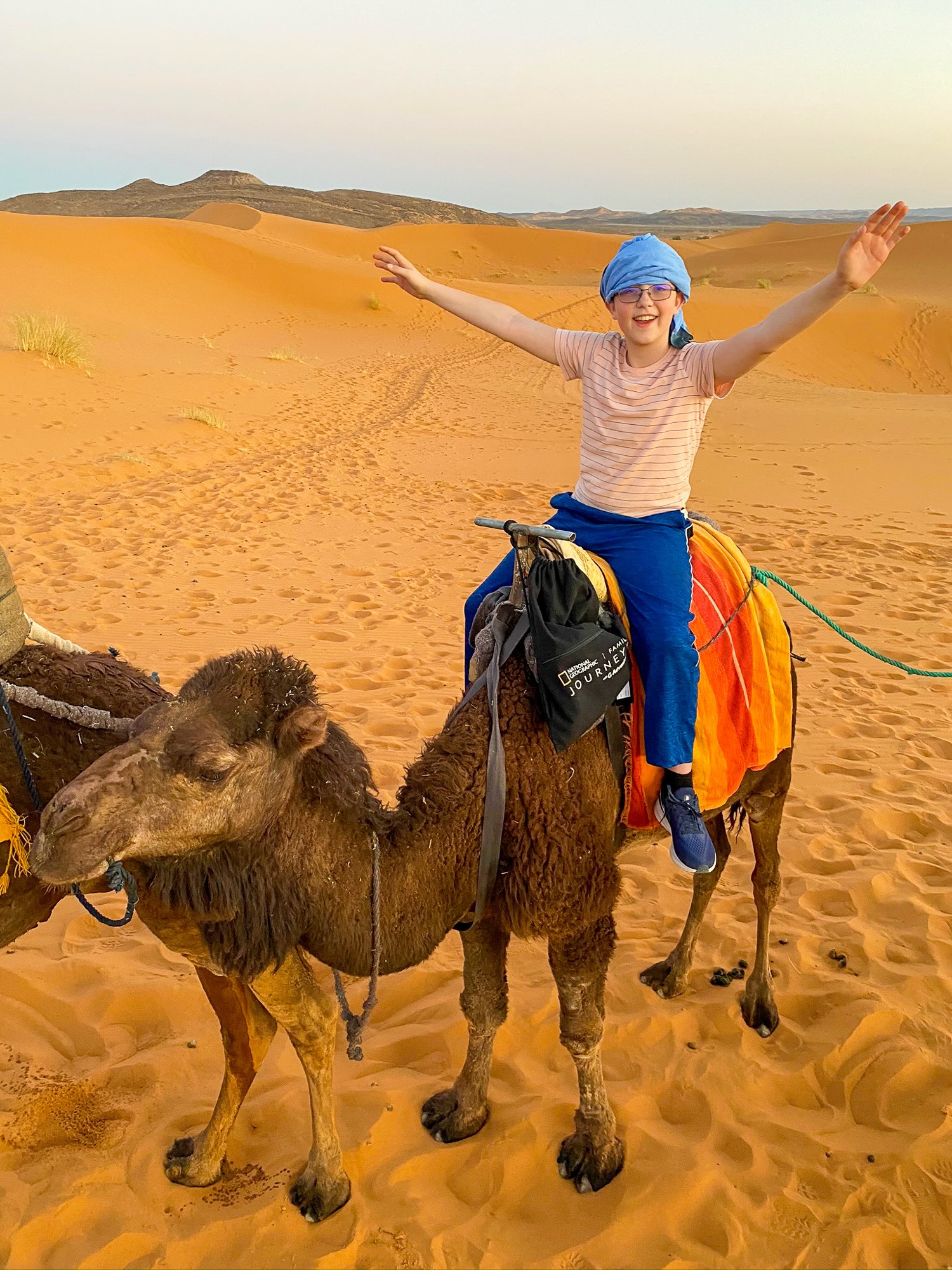
This website sometimes receives compensation, hosted travel, or products related to blog posts. This article may include affiliate links at no extra cost to consumers. As an Amazon Associate, I earn money from qualifying purchases.
1. Explore the Medina of Marrakech.
Marrakech is one of Morocco’s major cities and is known for its walled old town, or medina. It is overwhelming in the most wonderful way. Look out for zipping scooters and donkey-pulled carts as you wind through this UNESCO World Heritage Site’s intriguing maze of shops, restaurants, and sites.
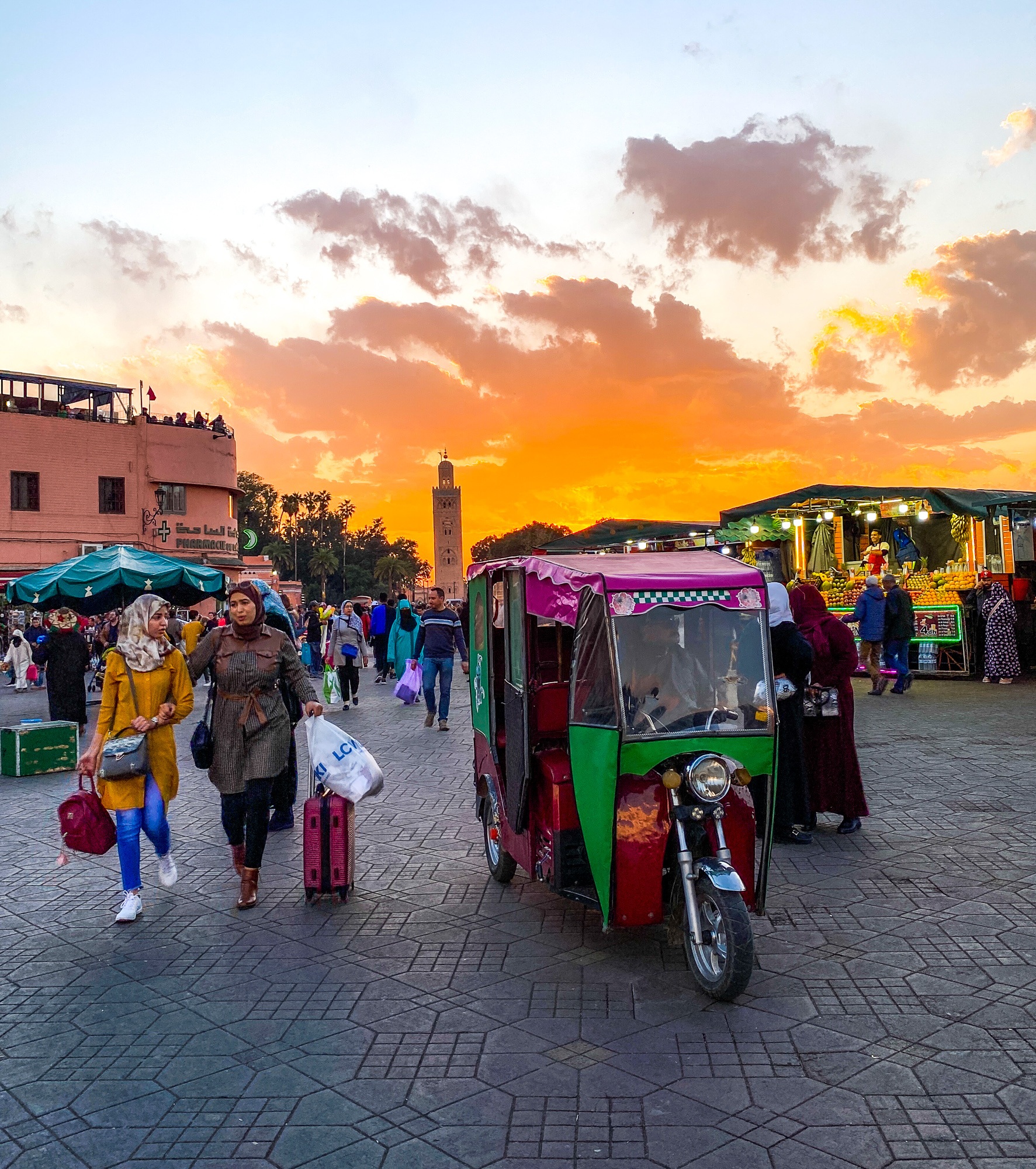
You can hire a tuk-tuk (a three-wheeled auto rickshaw) to transport you through the city. Or, do as my tween son, Leo, and I did and take your pick from numerous carriages lined up near the main square for a horse-drawn ride.
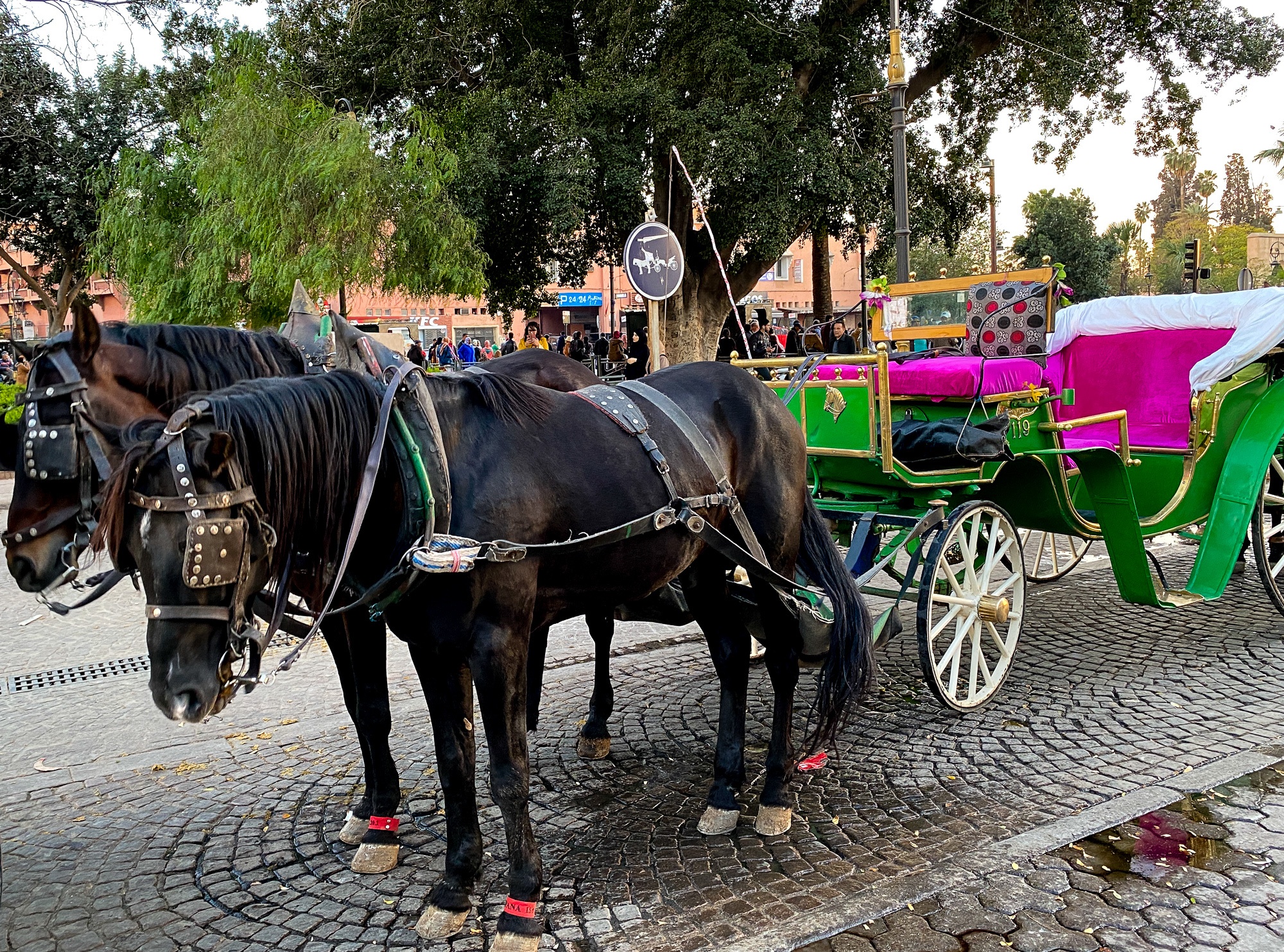
2. Take in the sights, sounds, and scents of Djemaa el Fna Square.
Snake charmers, musicians, and vendors fill Marrakech’s central square, Djemaa el Fna. Find simple yet innovative carnival games, like the challenge of kicking a plastic water bottle with a soccer ball.
It’s fun to interact with locals by dancing to live musical performances, spending a few dirhams to play a game, or pulling up a stool to dine at one of the many food stalls. If you want to take photos of the performers, then be sure to give a tip.
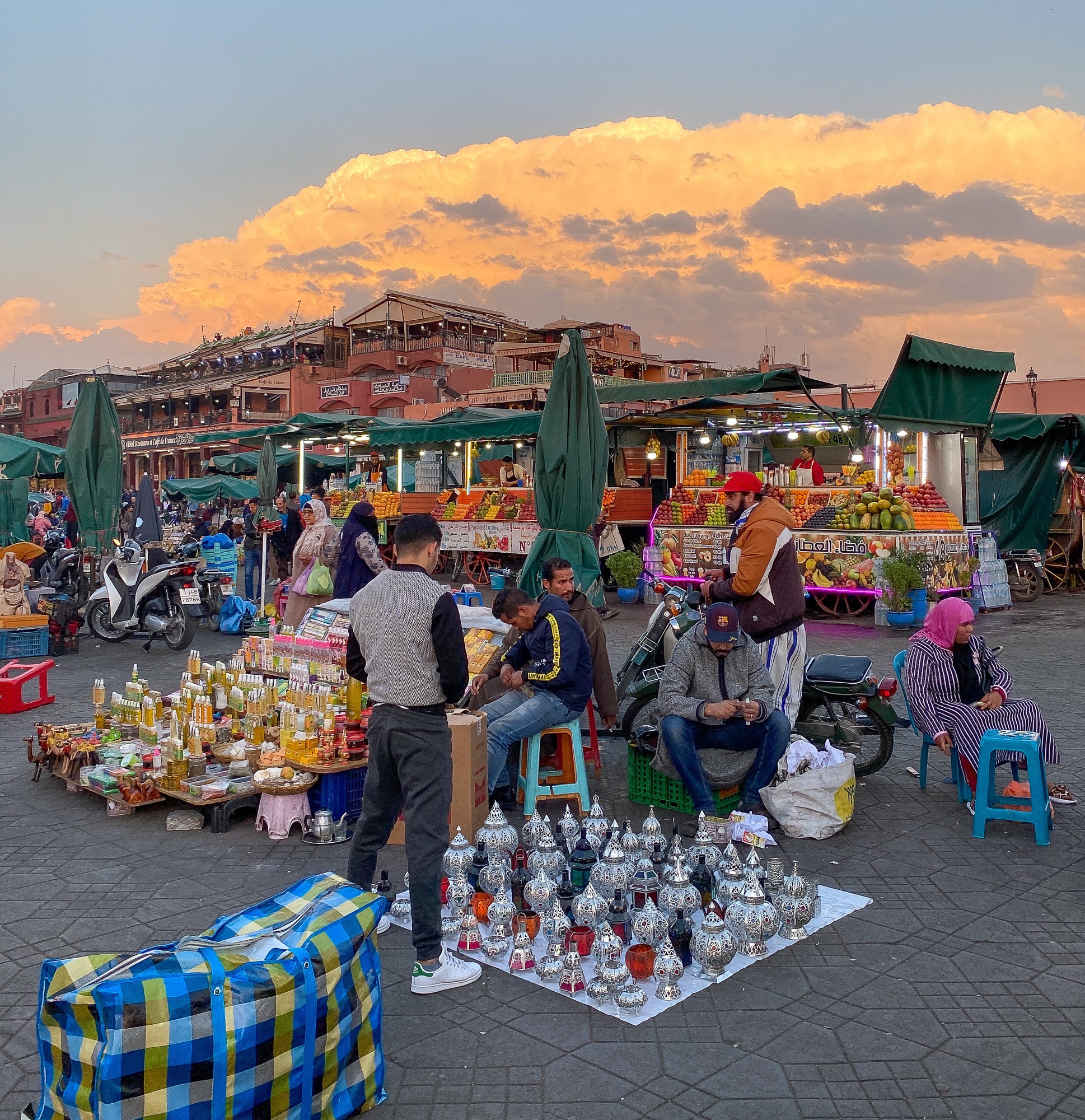
3. Shop the souks in Morocco with kids.
A souk is an Arab marketplace or bazaar. If you get lost in the Marrakech souks (and you will), then ask a local to point your family back to Djemaa el Fna Square.
In Morocco’s souks, vendors sell everything from the freshest fruit juices to tea sets, rugs, and painted ceramics to household goods like washing machines decorated with flowered lids. It seems everything in Morocco is beautifully decorated!
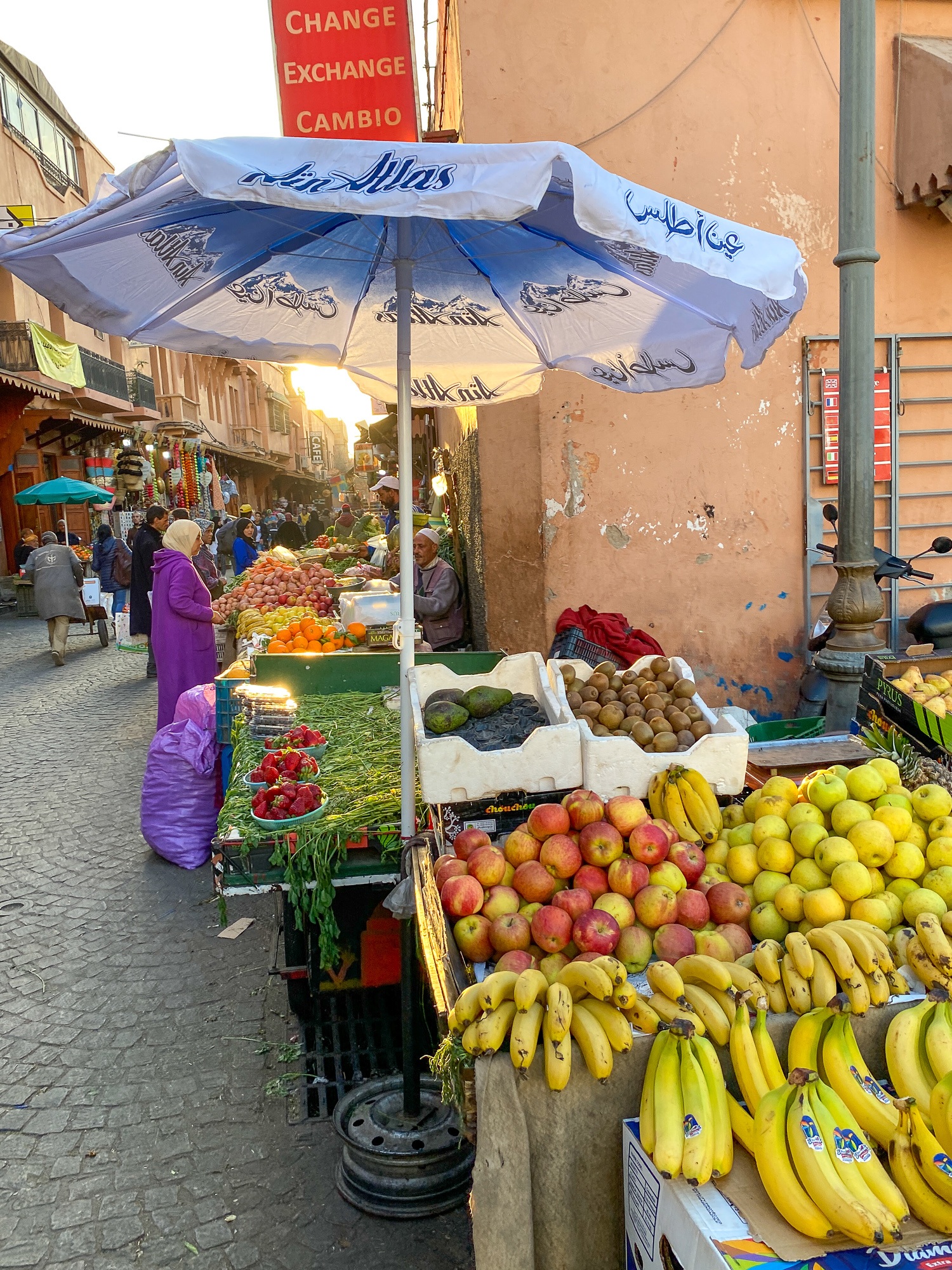
4. View Kutubiyya Mosque.
Mosques are worship centers for those who practice the religion of Islam. Listen for the melodic call to prayer from every mosque’s minaret (tower) in Morocco five times per day. Not everyone stops to pray, but many do. Both men and women attend Moroccan mosques, but they pray separately to avoid distraction from God.
The primary mosque in Marrakech is Kutubiyya Mosque. It’s the city’s oldest mosque, built in 1147. Like nearly all mosques in Morocco, only Muslims may enter. There are two exceptions to this rule: Hassan II Mosque in Casablanca and Tin Mal Mosque in the High Atlas.
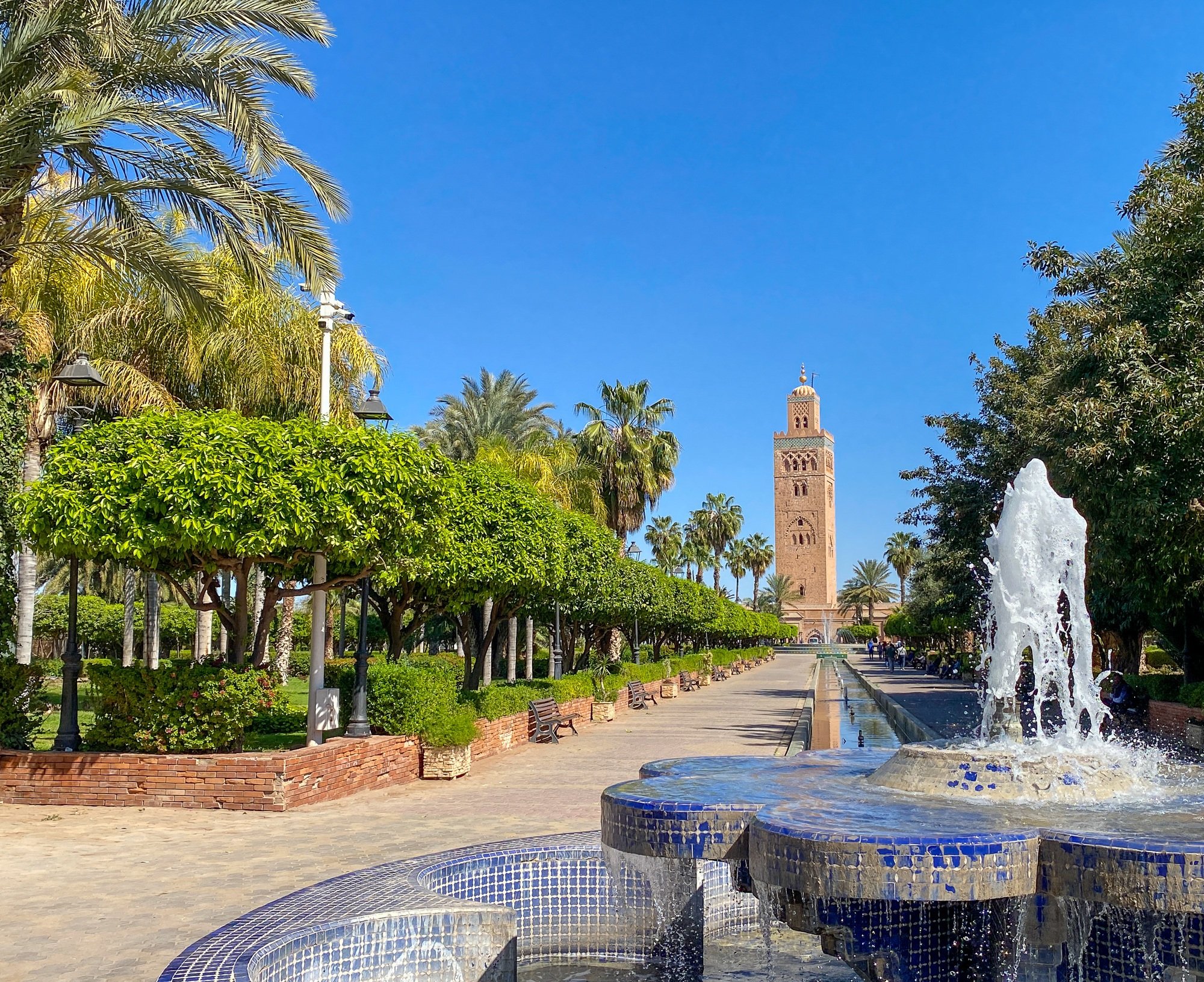
5. Admire Moroccan tiles.
Tiles are everywhere in Morocco! In addition to being a beautiful design element, tiles are the preferred floor covering in this desert country. They keep moisture from coming up from the earth during floods, and they are easy to clean.
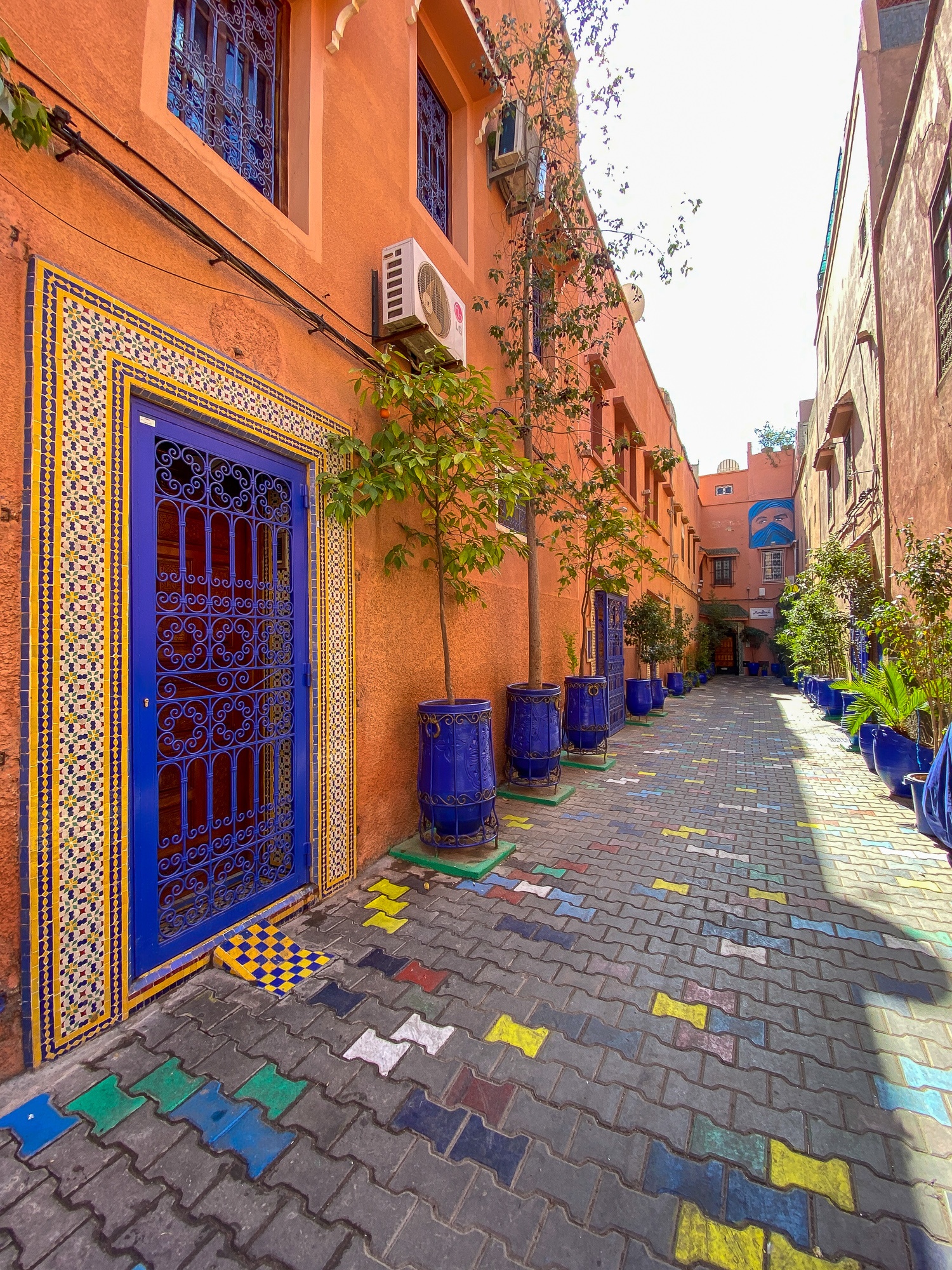
6. Visit Bahia Palace.
Constructed in the 1800s, Bahia Palace looks fit for a king. This grand home was actually not the home of Sultan Muhammad ibn Abd al-Rahman, however, but of his top vizier (advisor). He named it for his favorite wife, Bahia, which means beautiful. Indeed, the palace is a perfect place to explore and get your Moroccan tile fix, too.
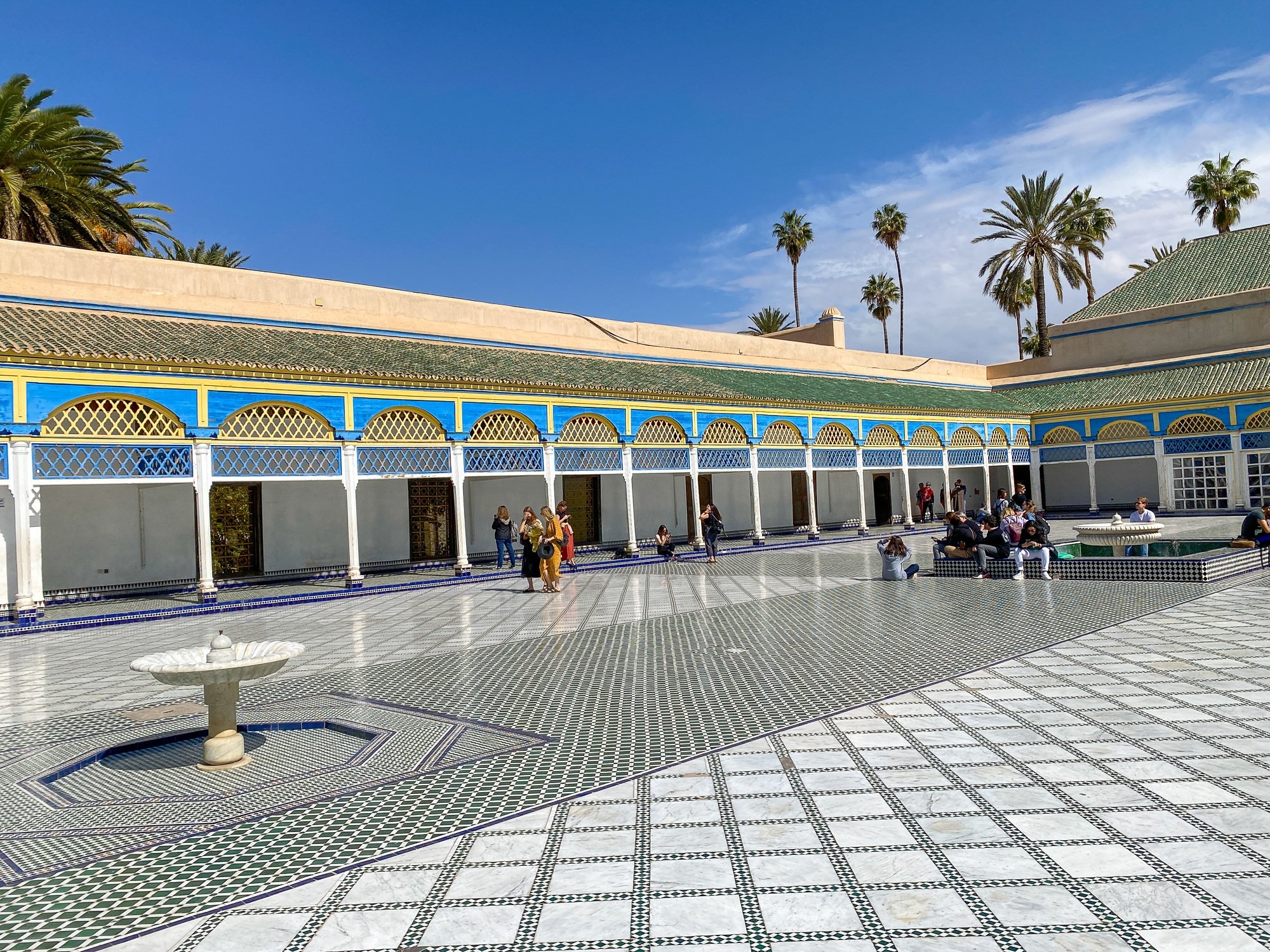
7. Get a henna tattoo.
Henna artists may try to entice your whole family to get henna tattoos as you explore Marrakech. This temporary body art is created using a dye from the henna plant.
The art of applying henna to the hands and feet is known as Mehndi. It is traditionally used for celebrations and rites of passage like weddings. Henna is typically worn by women and children, but Western men may want to join in the fun.
For a relaxing air-conditioned experience, take the kids to the Marrakech Henna Art Café, located right off Djemaa el Fna square. They guarantee the use of all-natural henna, whereas some street vendors may use chemically enhanced products. Expect your henna design to last anywhere from one to three weeks.
My son and I flipped through binders to view all sorts of intricate henna designs from which to choose. Meanwhile, we enjoyed a cup of mint tea. Snacks and meals are available, too.
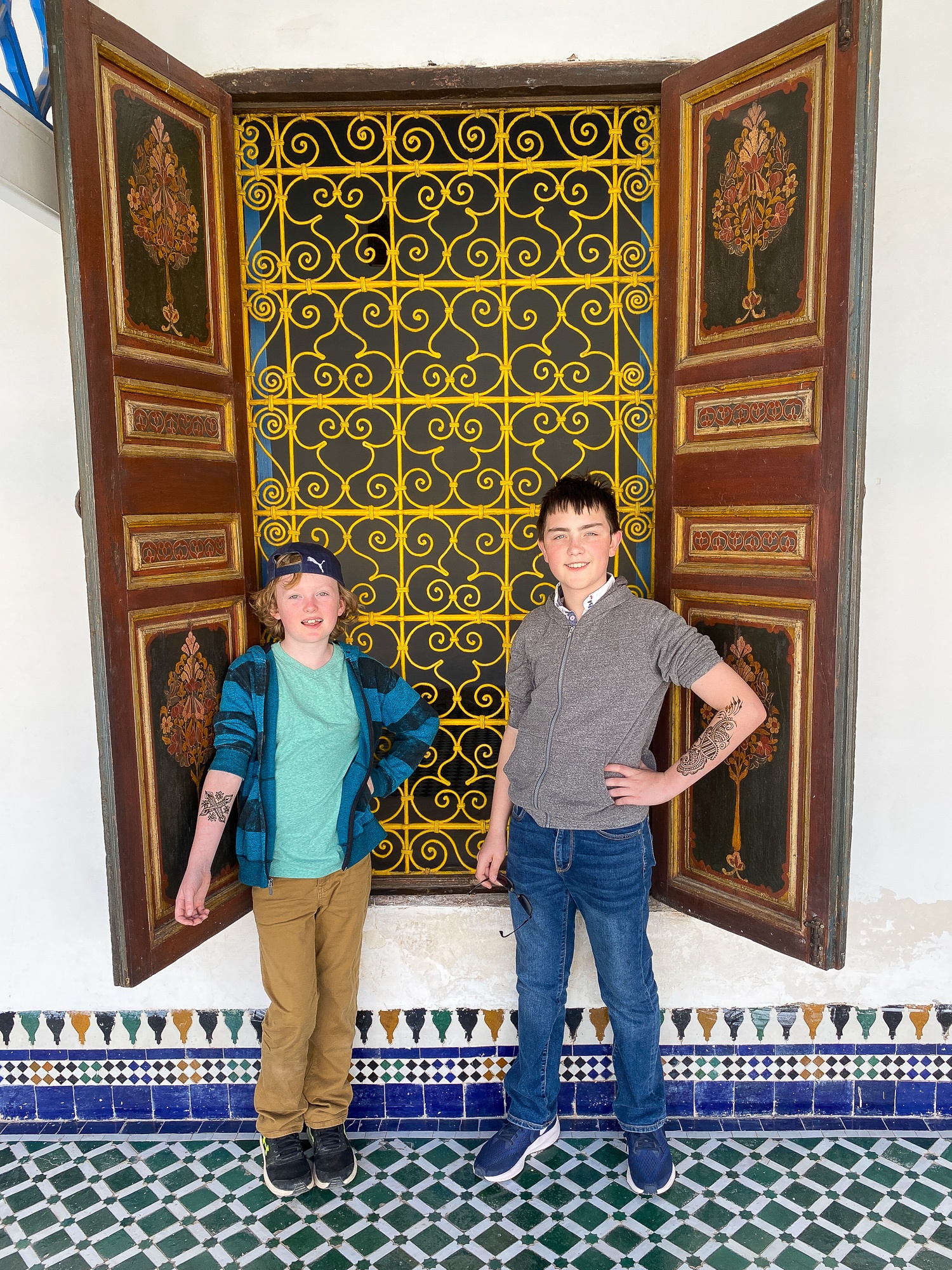
8. Drink Moroccan mint tea.
Maghrebi mint tea is the national drink of Morocco. It’s made with fresh spearmint, green tea, and sometimes other herbs and sugar.
Mint tea is offered to guests as a sign of warm welcome and tops off most Moroccan meals. Before taking a sip, say, “B’Saha!” That means “cheers” or “health” in Arabic. It would be rude to turn down a cup of tea in Morocco as a guest in someone’s home.
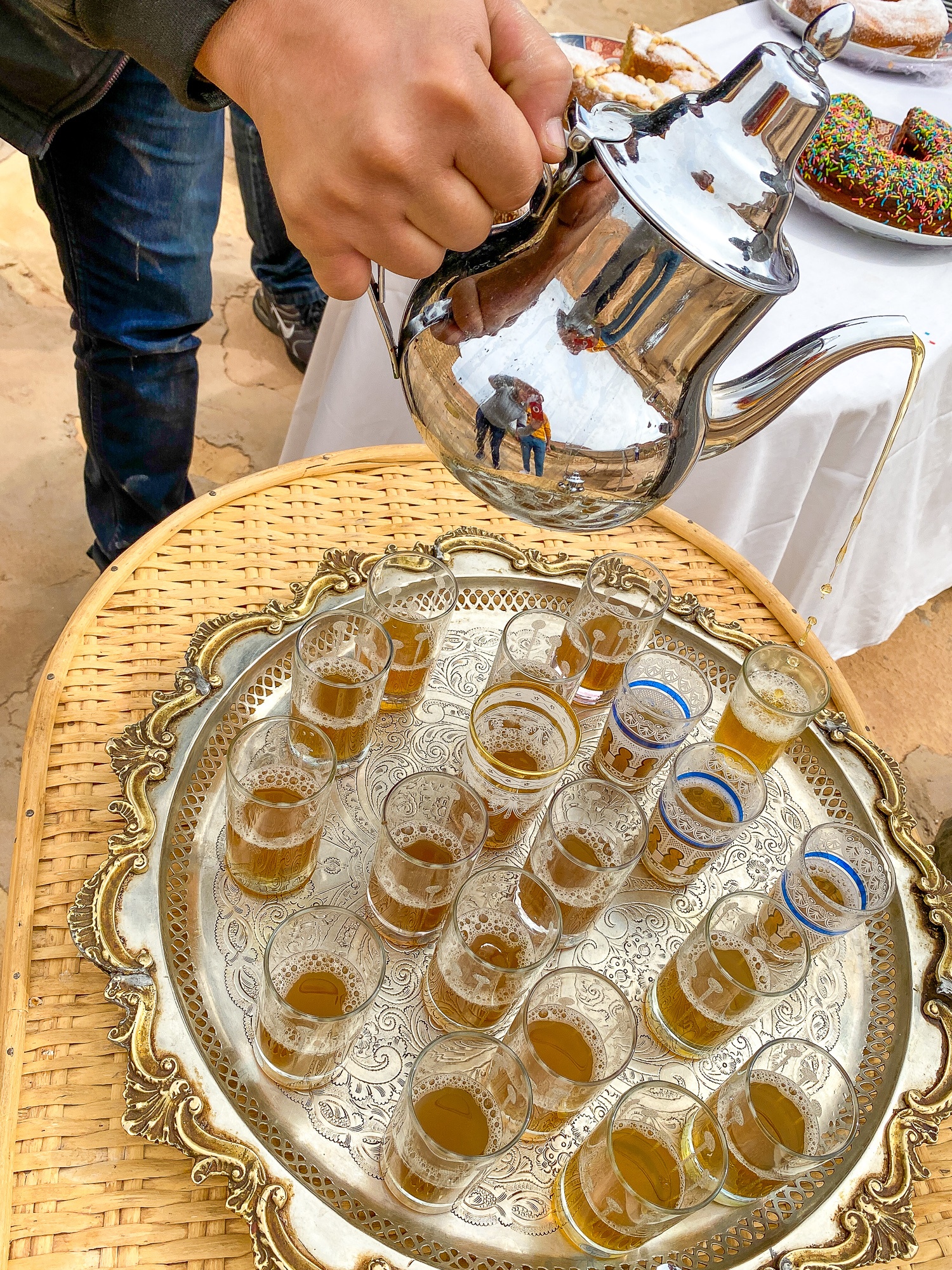
9. Watch a belly dancer performance.
Moroccan culture is intriguing, with contrasting beliefs and customs. This alluring form of dance may seem out of place in such a pious country. Belly dancing is a tradition that was imported from Moroccan residents of Turkish and Egyptian descent who are not followers of the Islamic faith.
In family restaurants, though, belly dance performances are more modest than you might expect, with dancers using their hair or scarves to cover their cleavage. The beautiful performer in the video above was actually dancing a lot with little kids and even picked up a toddler in the restaurant.
10. Sip fresh orange juice.
Second only to Morocco’s beloved mint tea is orange juice. This tangy, sweet drink is actually made from tangerines (oranges from Tangier!) and is way better than your standard OJ.
I even got my fruit-averse son to take a sip, and then he begged for his own! In fact, we loved this drink so much that we bought a juicer so we could make our own tangerine juice at home. This is good, but nowhere near as good as the liquid sunshine you’ll find in Morocco.
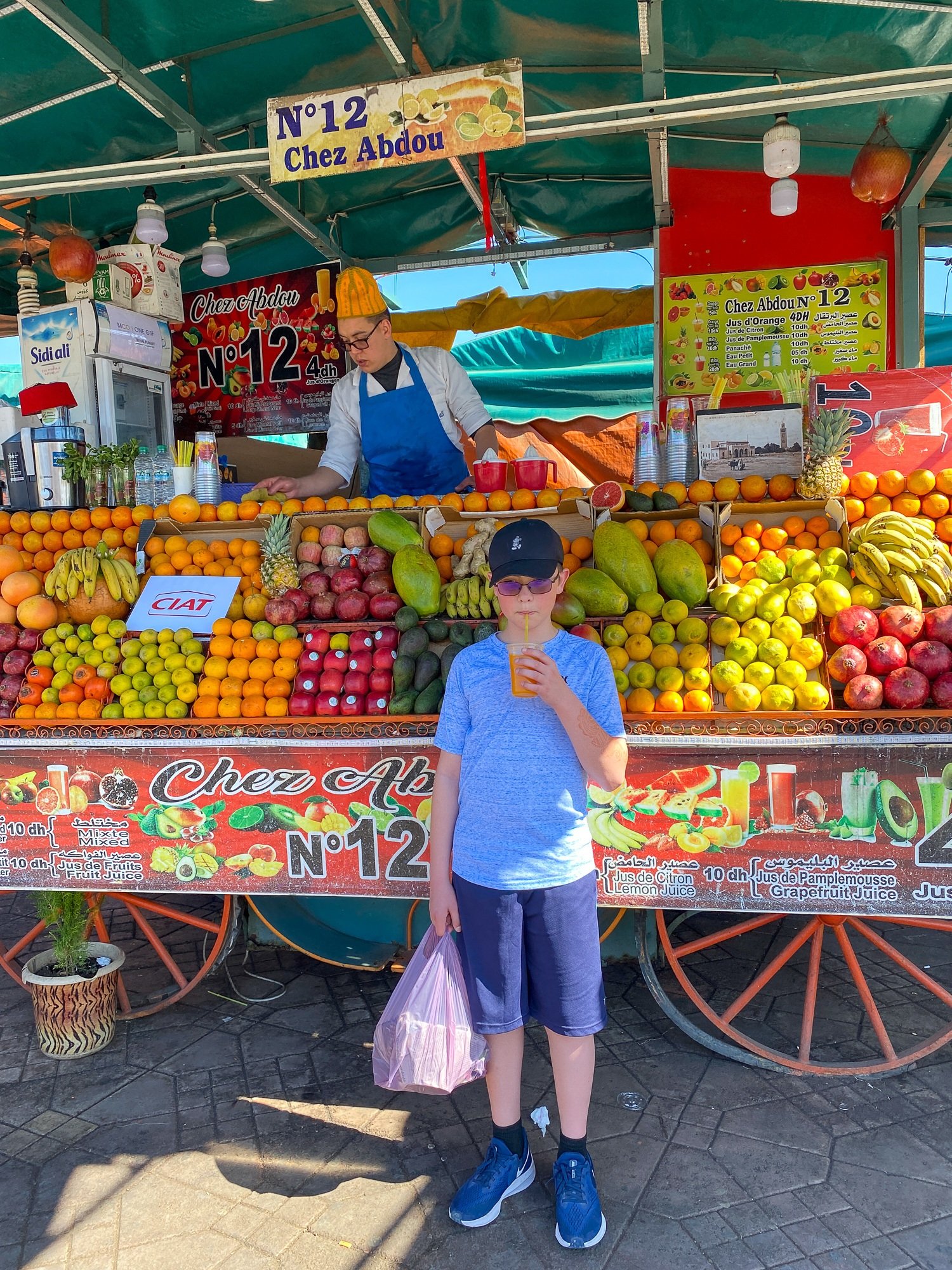
11. Journey into the Atlas Mountains.
The Atlas Mountains make up the longest mountain range in the vast continent of Africa. They separate the Mediterranean and Atlantic coastlines from the Sahara Desert. This range stretches from Morocco through Algeria and on to Tunisia.
To reach the Sahara Desert from Marrakech, you will need to embark on a road trip through these mountains. With breathtaking scenery along the way, you’ll be glad you did.
Toubkal is the highest mountain peak in the range and in all of North Africa. You’ll find this mountain topped with snow and ice if you visit during winter.
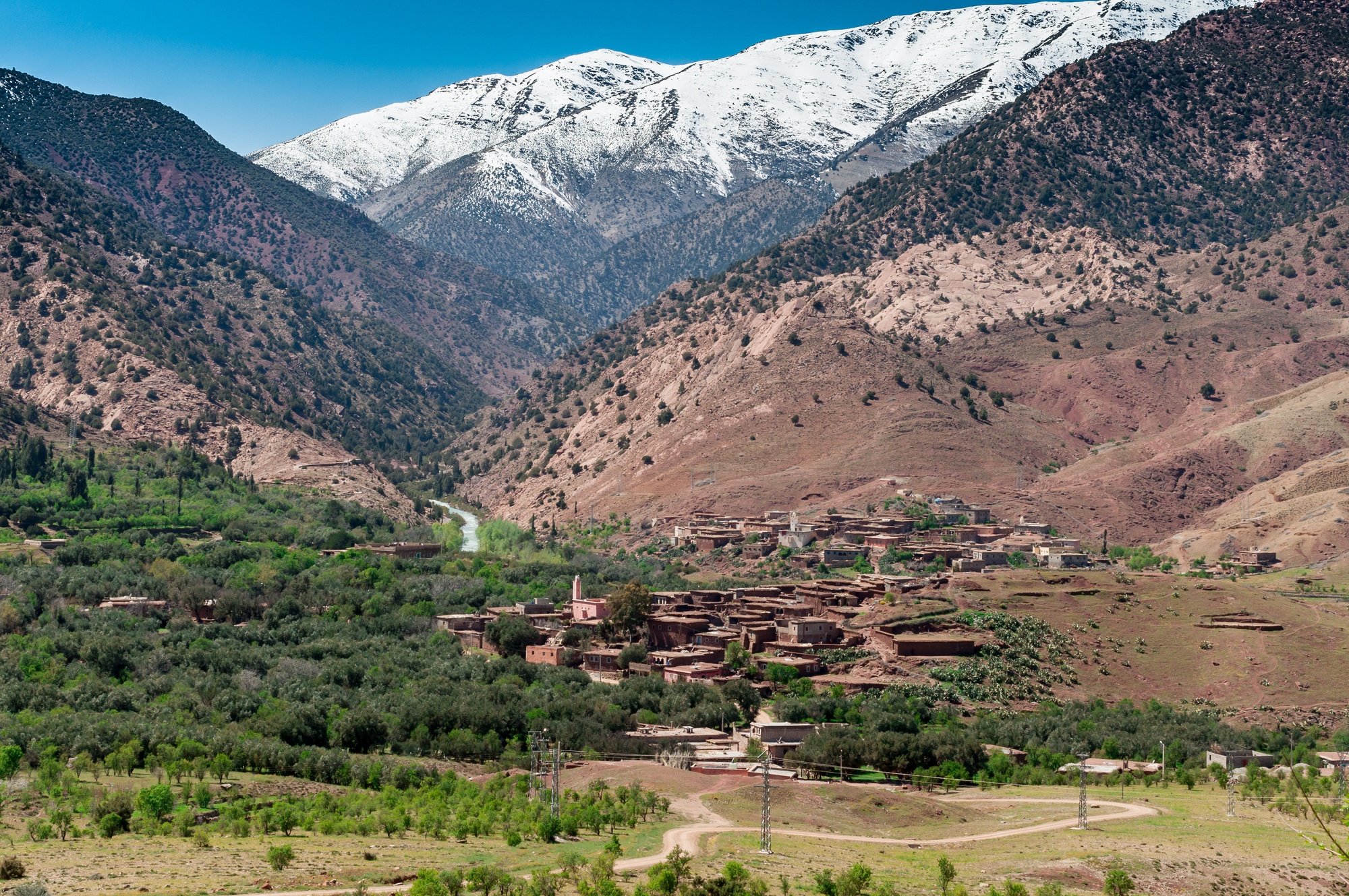
12. Tour Atlas Film Studios.
In terms of geographic size, do you know where you’ll find the world’s largest movie studio? Morocco! Atlas Film Studios sits on 322,000+ square feet of desert.
Atlas is a popular shooting location due to its relatively affordable price tag, unique desert landscape, and proximity to snowy mountains. Game of Thrones, Romancing the Stone, Star Wars, and Gladiator are just some of the TV shows and movies that have been filmed here.
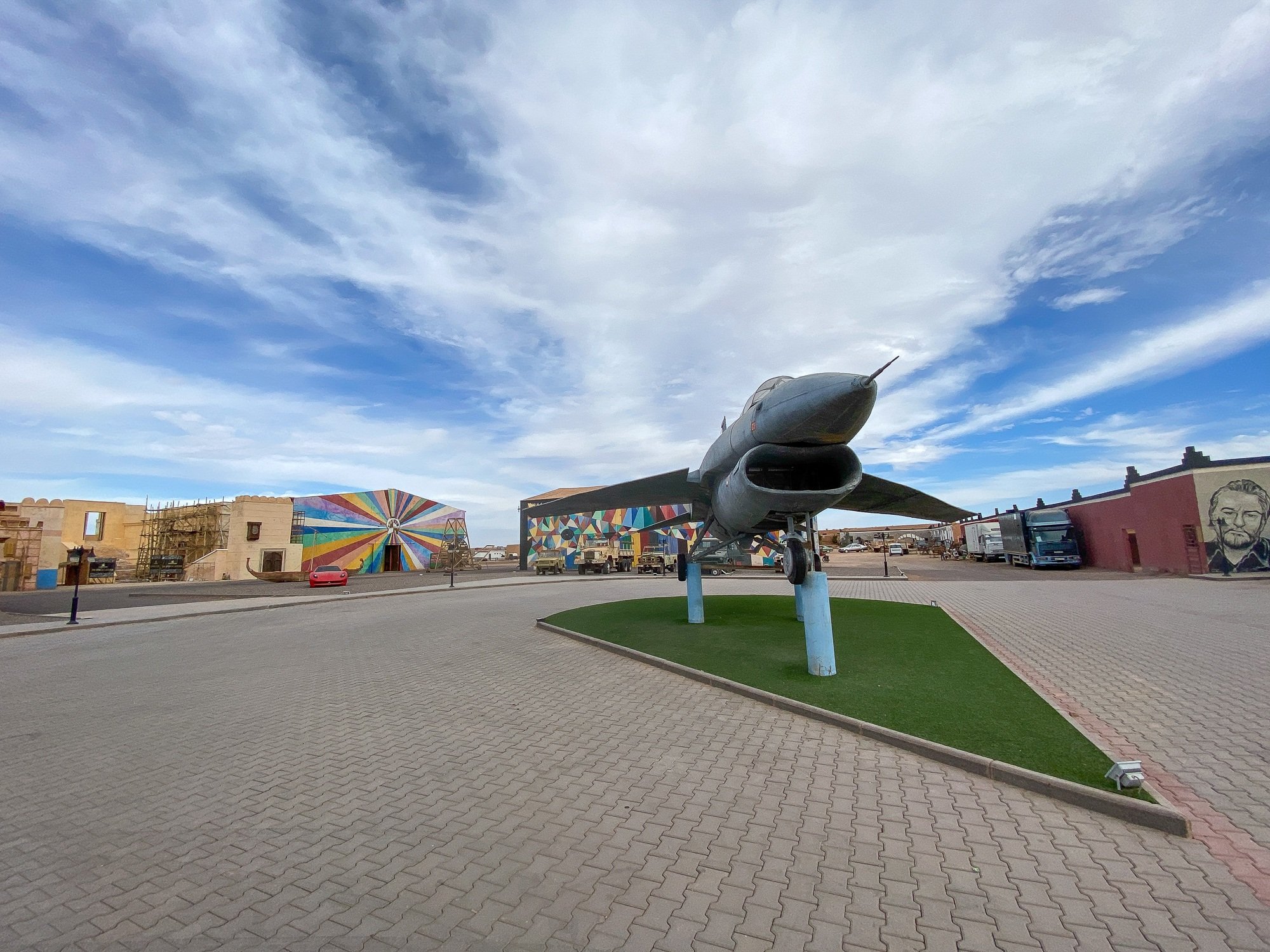
The best part of a visit to Atlas Film Studios? Unlike most movie studios, visitors can actually climb on and interact with real sets! The kids in our National Geographic and G Adventures tour group hadn’t heard of most of the productions shot here, but they did have a blast pretending to be Egyptian pharaohs and other characters during our guided expedition.
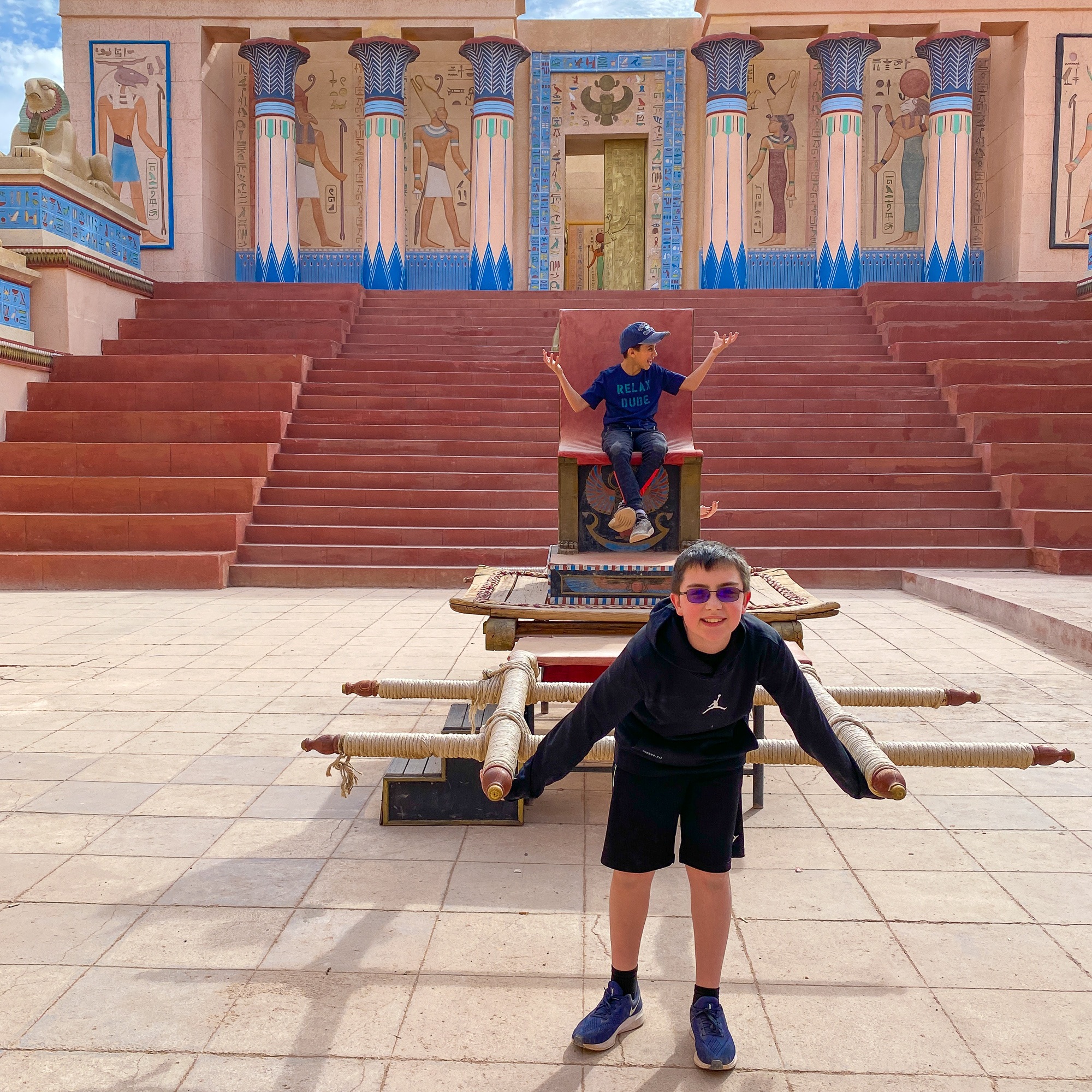
13. Stop to smell the roses in Kalaat M’Gouna.
Kalaat M’Gouna, also known as Valley of the Roses, prides itself on its abundance of Damask roses. In fact, the town hosts a weeklong Rose Festival to celebrate the rose petal harvest each May. Expect singing, dancing, food, and rose petal-flinging parades. It all culminates in the crowning of Miss Rose in a pageant.
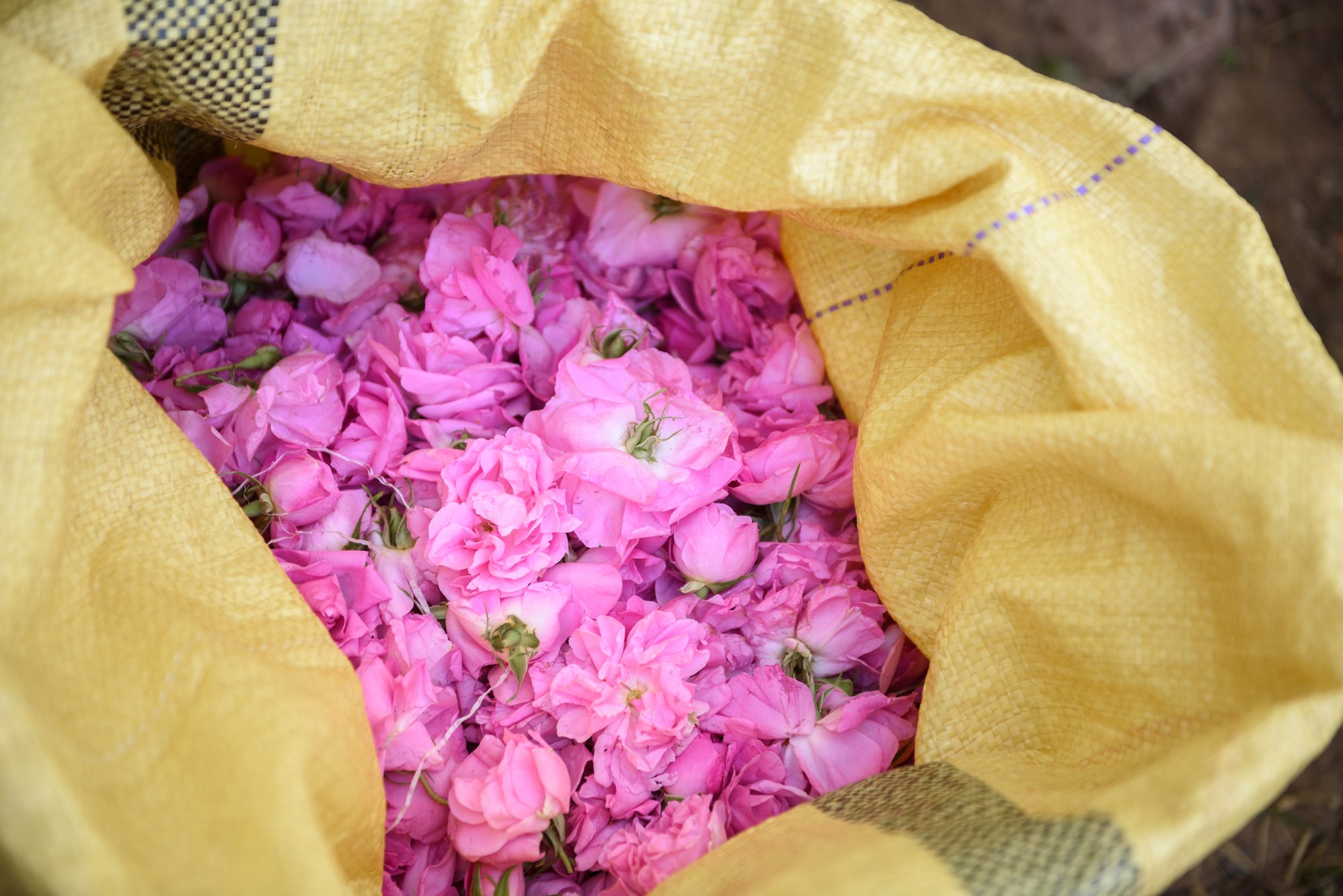
These pink flowers, renowned for their vibrant scent, are used to make rose water, rose oil, perfumes, and soaps. Even if you’re not visiting during the festival, then you should stop in the Valley of the Roses to pick up some fragrant souvenirs. I also suggest picking up some cosmetic argon oil at a fraction of the price you’d pay at home to improve your skin’s health and minimize the appearance of wrinkles!
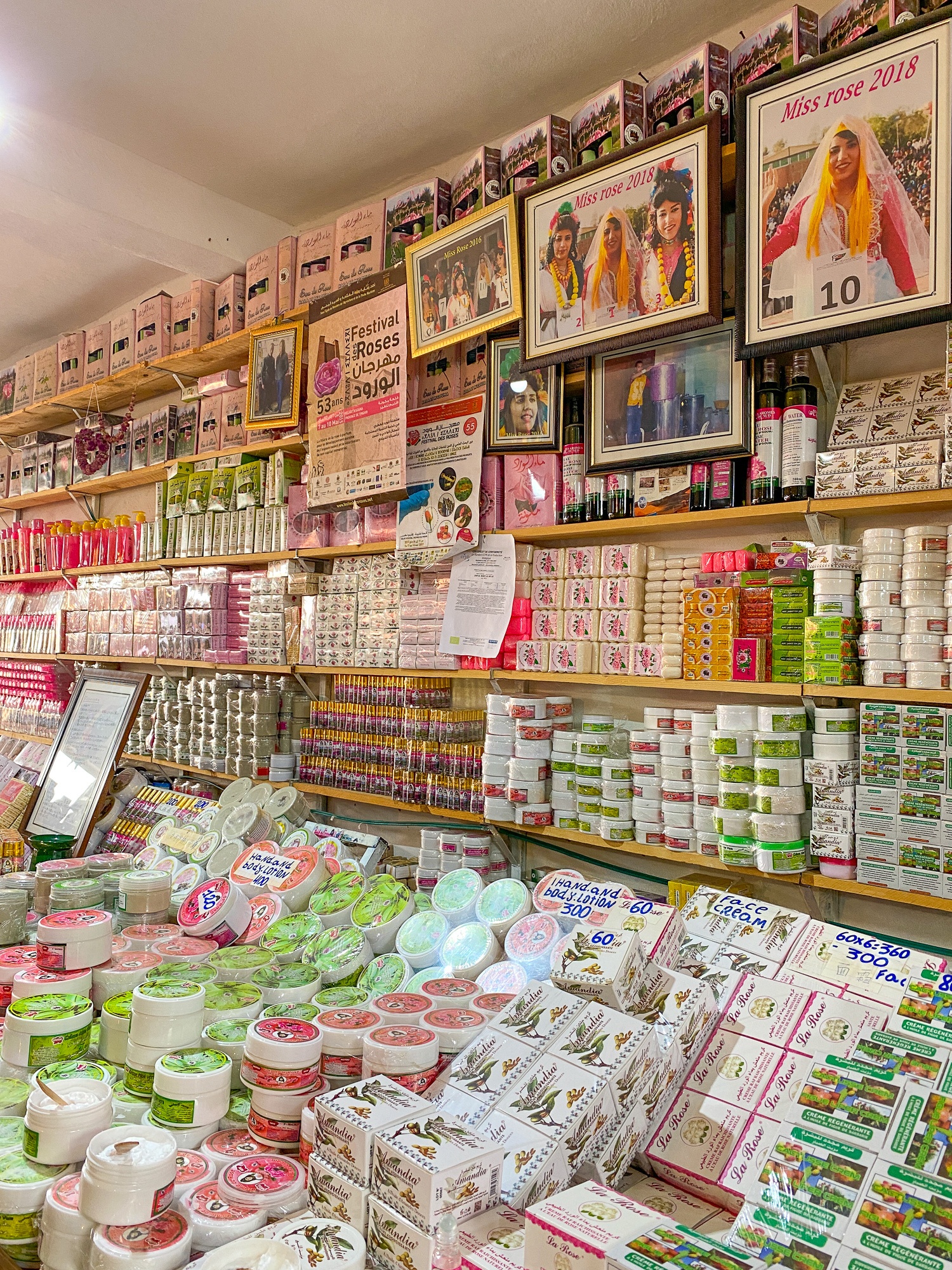
14. Purchase a Moroccan scarf.
A scarf makes a pretty souvenir of your Moroccan family trip. The scarves come in all sorts of colors and designs for women, men, and children. Moroccan scarves are useful, too. They keep the sun off your skin and shield your face from unexpected sandstorms in the Saharan Desert.
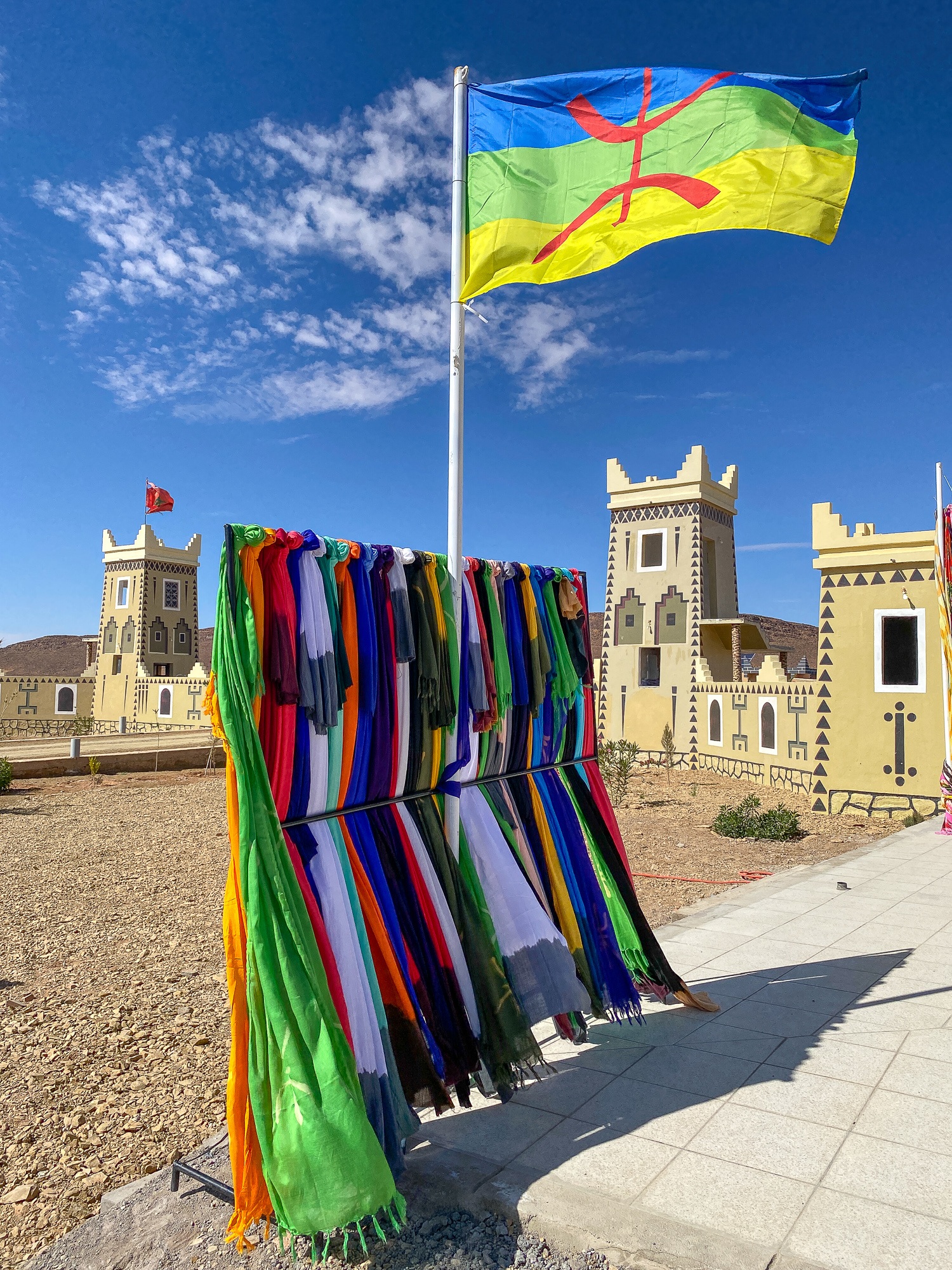
You’ll notice that many women in Morocco cover their faces with scarves, but this is not necessarily for religious reasons. Rather, many Moroccan women use scarves to protect their skin from the sun. In this conservative country, foreign women can also use scarves to cover up bare shoulders or low-plunging necklines.
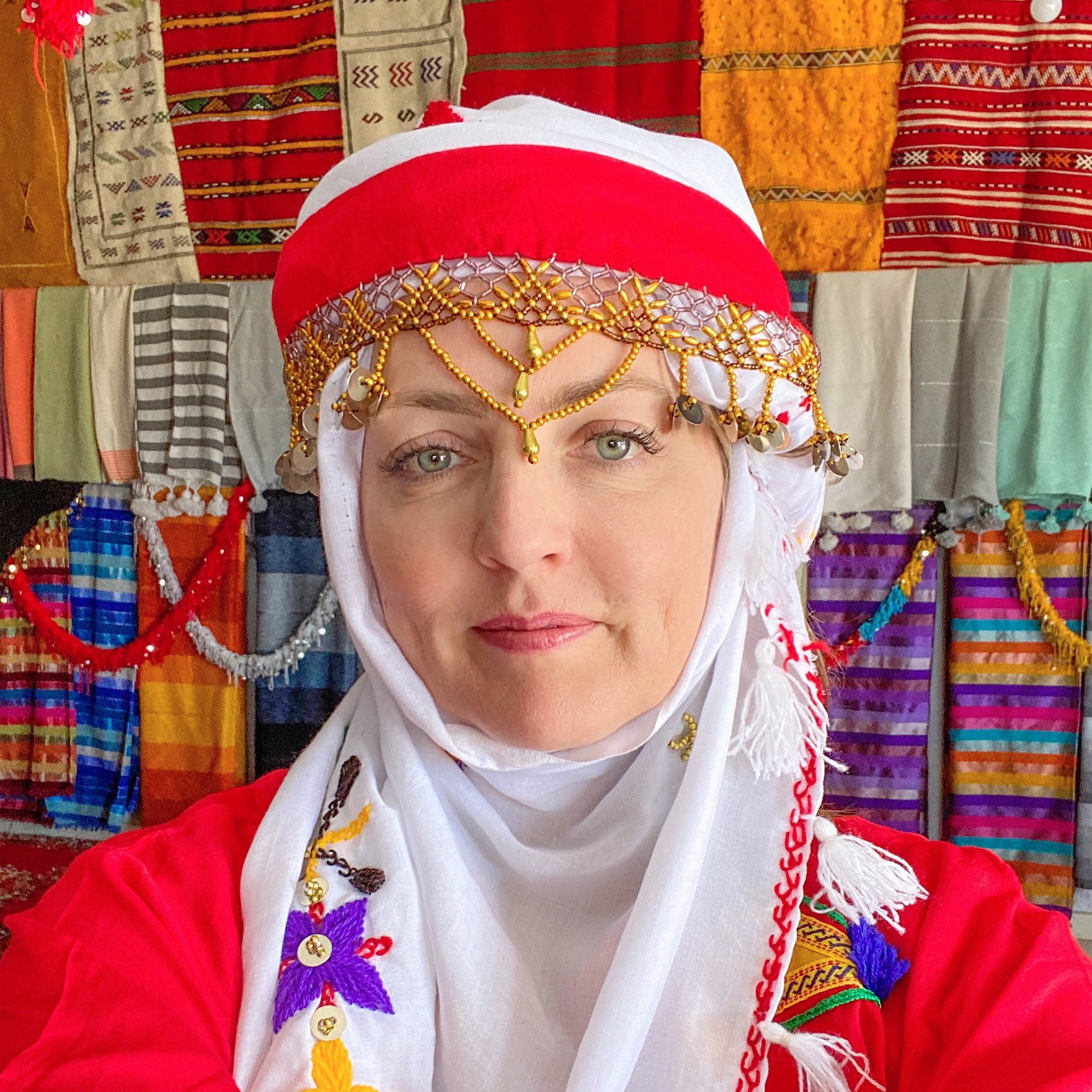
15. Embark on a 4×4 tour of sand dunes.
Once you finally reach the Sahara in Morocco with kids, you’ll want to get out into the dunes and explore the amazing landscape. Hire a tour guide driver to lead you on a Sahara Desert tour since getting lost in the desert or stuck in the sand would be easy.
Our group tour included a romping ride through the desert. We went in a caravan to make sure help was never far away.
We paused during our journey at a water well. That’s where we saw a group of nomads providing water to their donkeys from a spring. Nomadic Moroccans often let their donkeys roam free in the desert, knowing they can find them at the springs when they need animal assistance for transport.
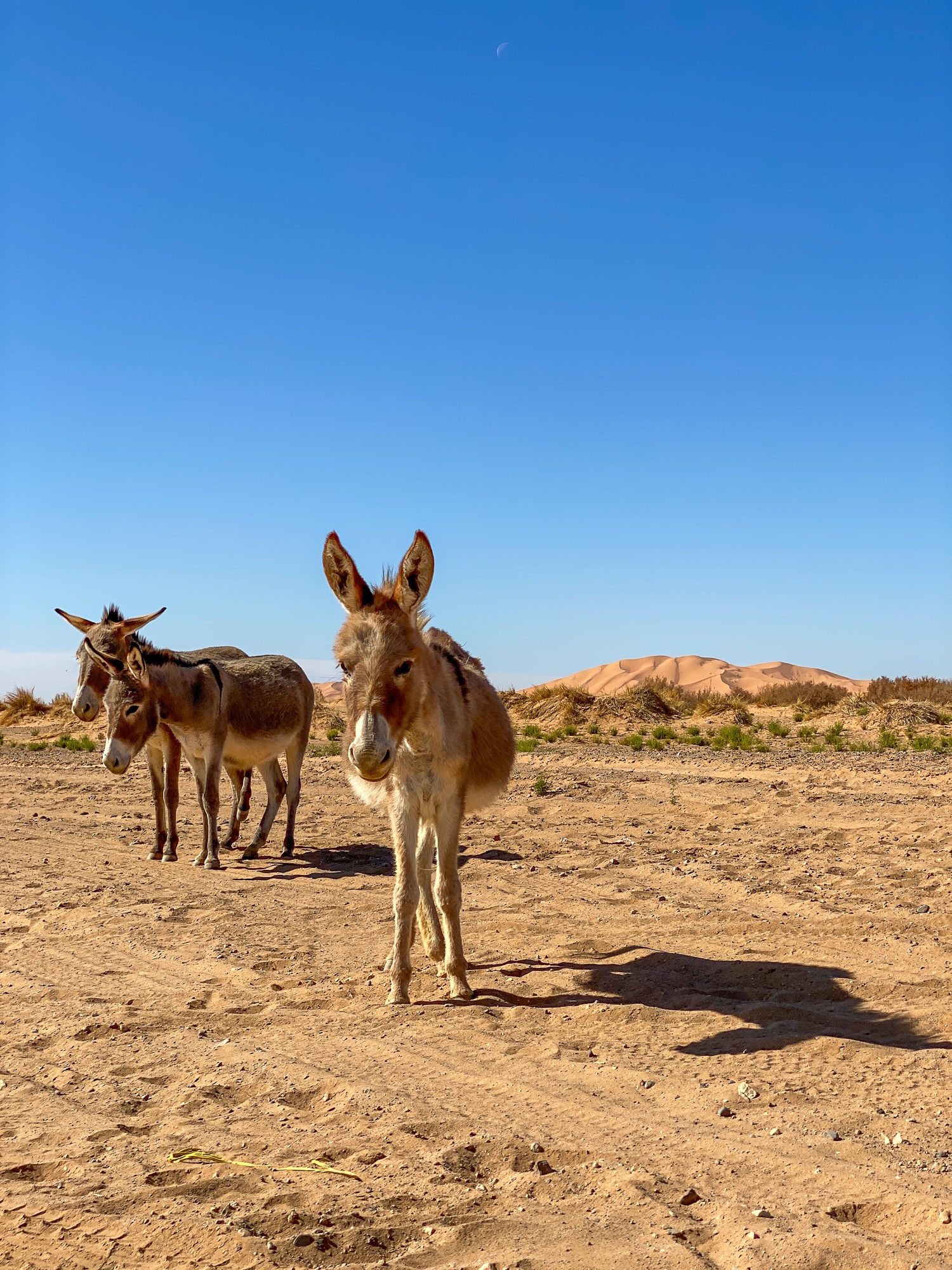
16. Meet a nomadic Amazigh (Berber) family.
Meeting a nomadic Amazigh (or Berber) family in Morocco is one of the coolest things I have ever done. Amazighs are native Moroccans who lived in this country long before the Arabians arrived in the 6th century.
Imazighen are well-known for their hospitality, and I can see why. This local family welcomed us to their tent with mint tea and bread made with wheat flour, camel lard, onions, and spices.
Then kids of all ages played soccer together. Kids don’t need to speak the same language to make friends — they just need a ball!
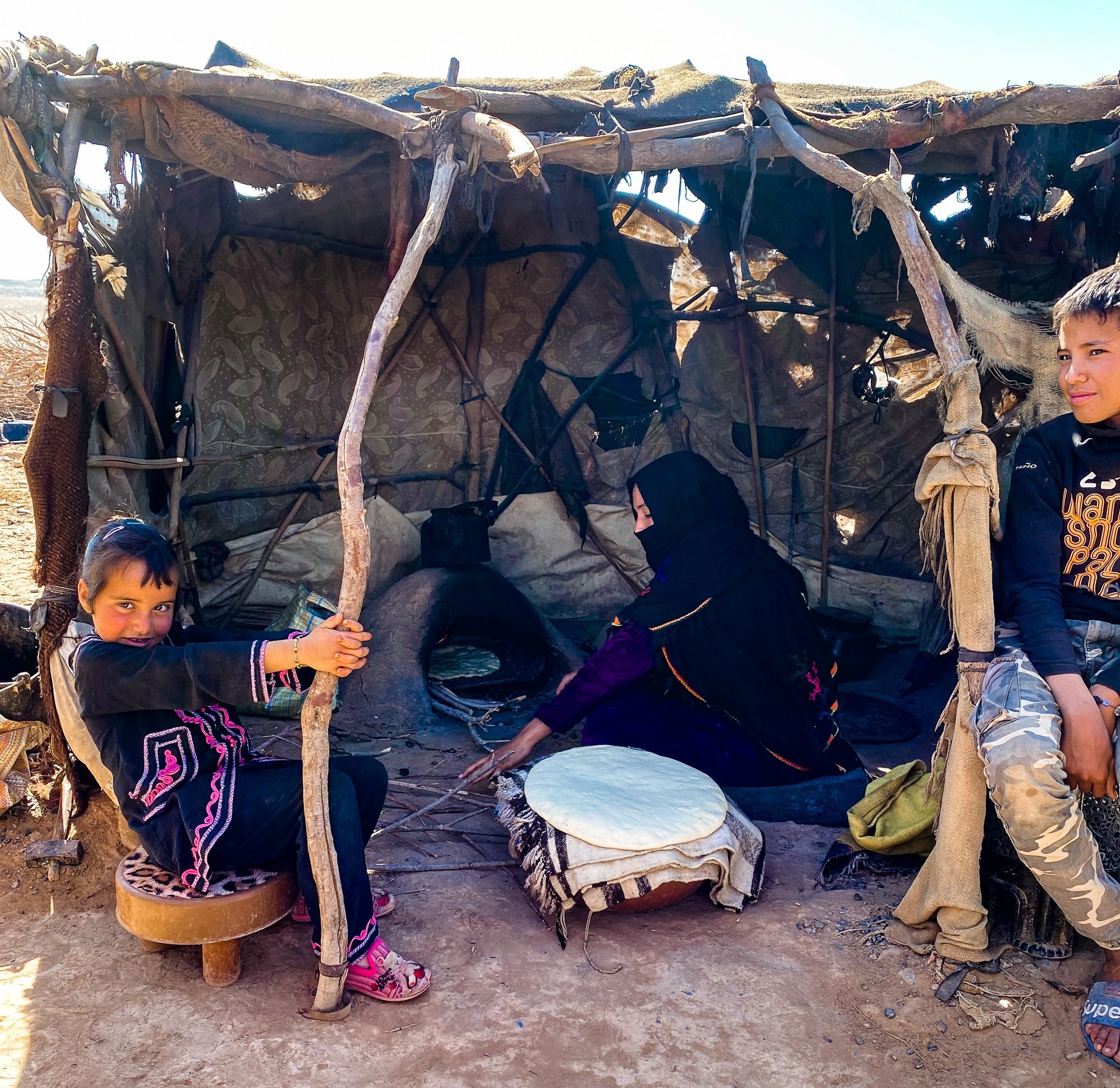
17. Go on a camel ride in the Sahara Desert.
Sometimes, you have a day you know you’ll always remember. The day we rode Arabian camels through the Saharan Desert in Merzouga was one of those days.
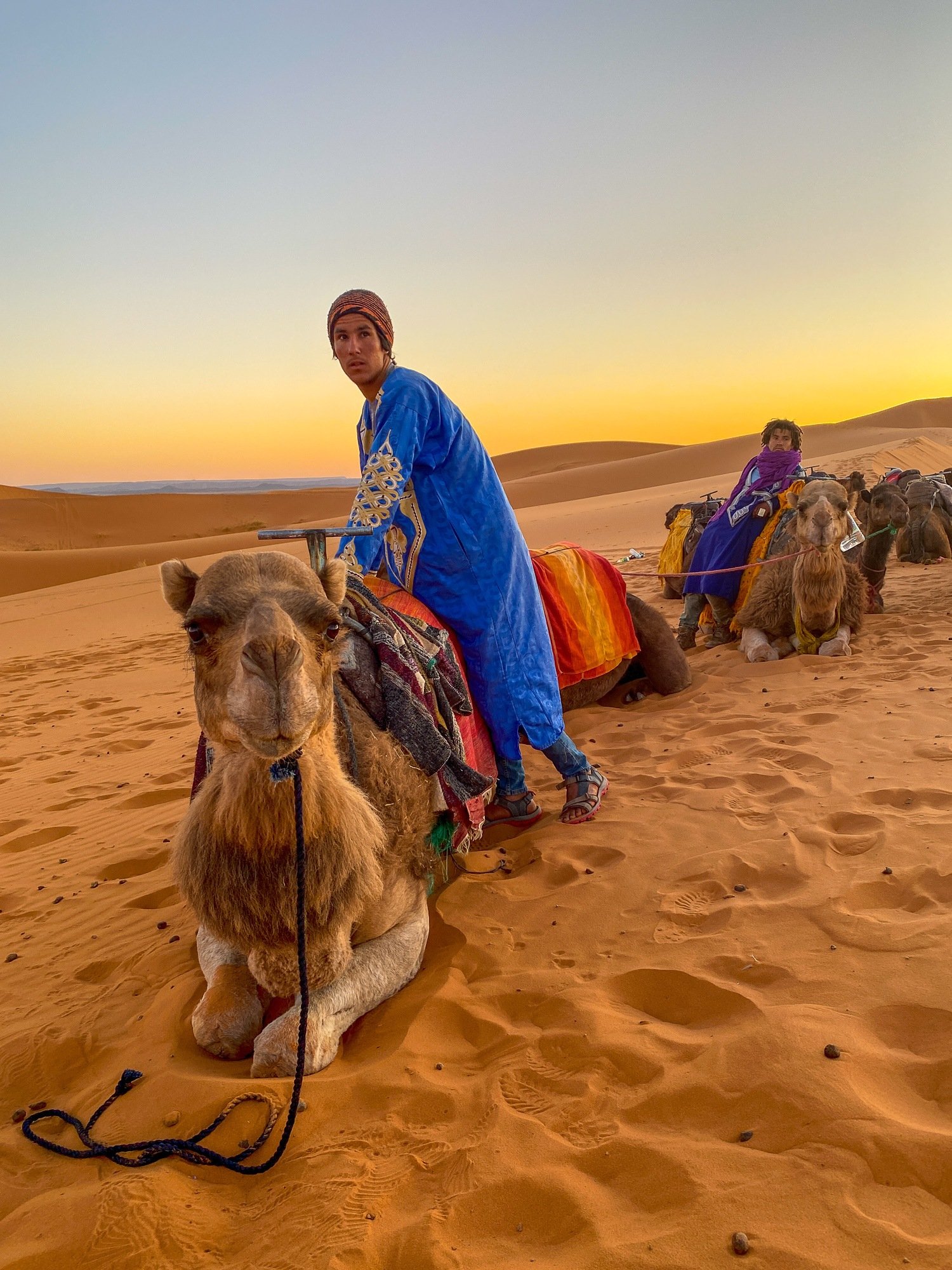
Midway through our camel trek, we took a break to slide down sugar-fine sand dunes on snowboards. Who could forget that?
Do you know the difference between a camel and a dromedary? One hump! Whereas camels sport two humps, dromedaries (also known as Arabian camels) have just one. Both store fat in their humps, which can be broken down by their bodies to provide hydration. This makes camelids an excellent source of transportation in the desert.
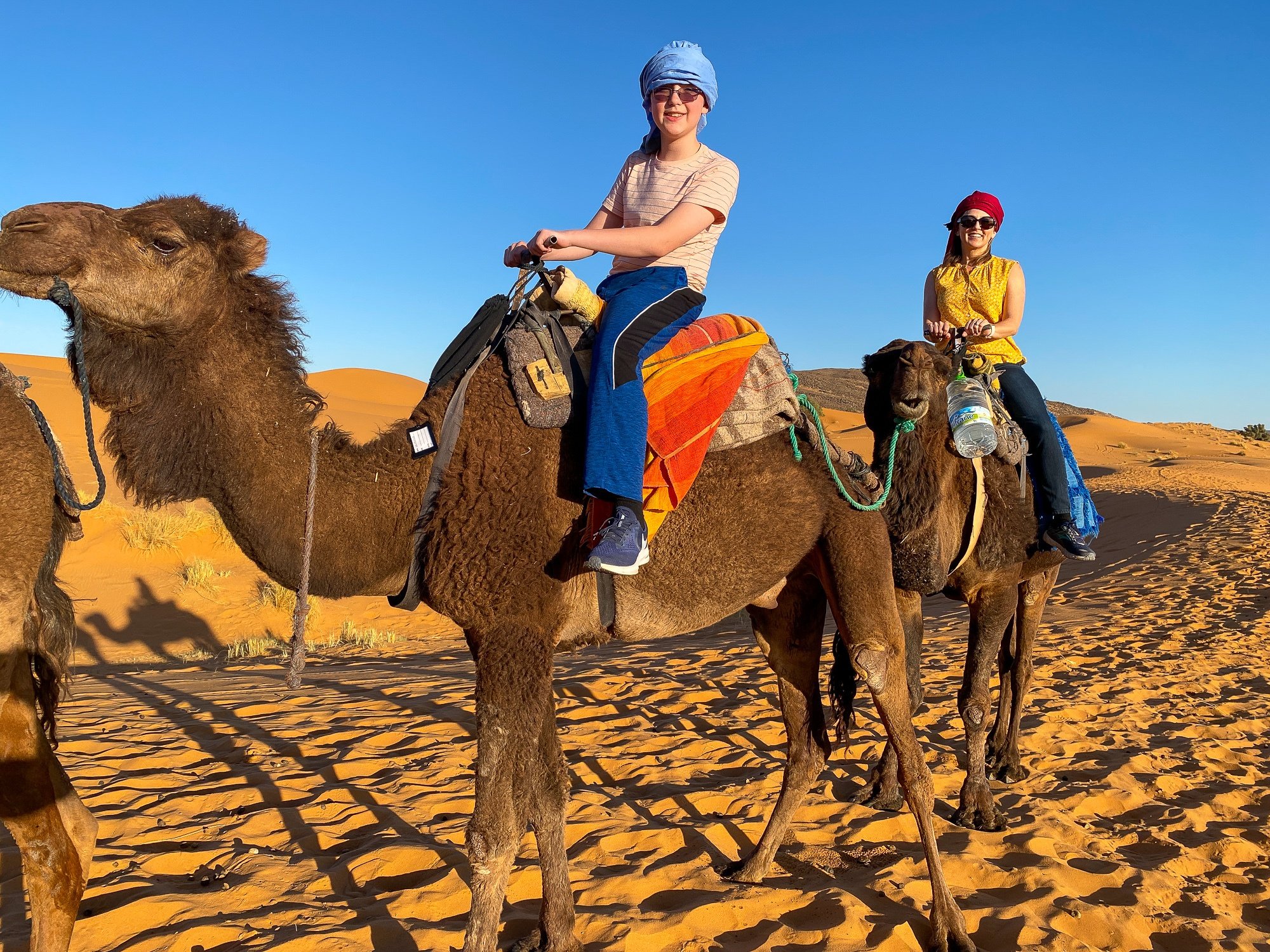
18. Dance to Gnaoua music under the stars.
To top off our camel safari, we were treated to live Gnaoua (or Gnawa) music in the desert under a blanket of twinkling stars. Gnaoua is a rhythmic traditional Islamic musical performance brought to Morocco by the Hausa people of Sub-Saharan Africa. Typical instruments in Gnaoua music include a three-string lute, a set of hand-held metal castanets, and a large double-headed drum.
The kids and even some of the adults (like me!) joined in clapping and dancing to the beat of the joyful-sounding songs. What an amazing end to an already amazing day! Take a look at our group enjoying the Gnaoua music by bonfire light in the video below.
19. Explore Ksar Aït Ben Haddou UNESCO Heritage Site.
The majestic Ksar Aït Ben Haddou was built in the 1600s with earthen elements like mud, clay, and wood using pre-Saharan methods that date back to the 10th century. Once a trading post linking Marrakech to Sudan, the site is made up of compact houses plus a mosque and two cemeteries.
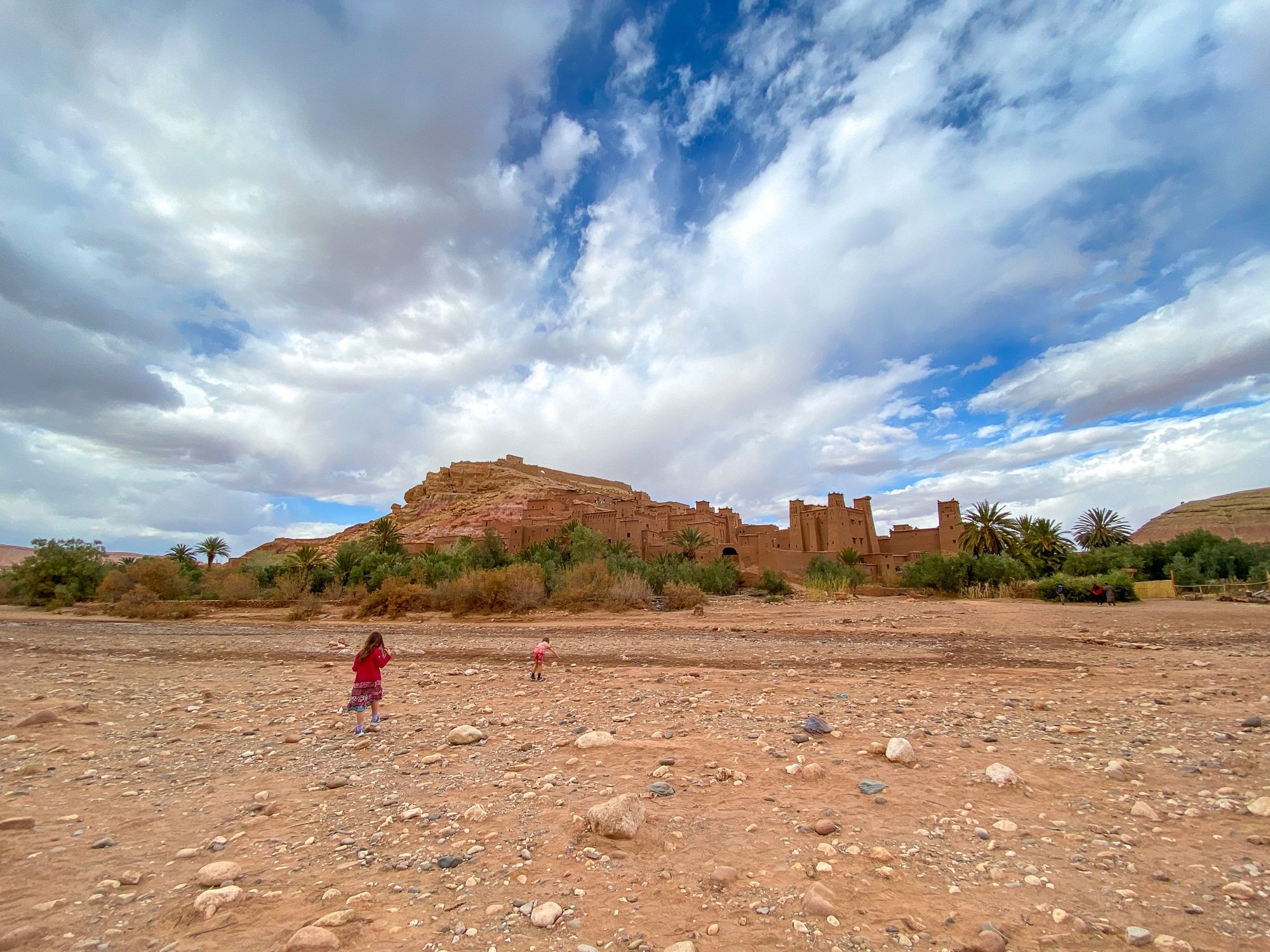
We felt like we stepped back in time as we wandered the streets of this fortified village. Be sure to climb all the way to the top for a 360-degree panoramic view of the valley, with verdant green plants on one side and the stark desert on the other.
A few Moroccan families still reside in Ksar Aït Ben Haddou today, but most people have moved to more modern accommodations. It’s located in Ouarzazate, a city that is nicknamed the Door of the Desert. Movies filmed at this UNESCO heritage site include Gladiator, The Mummy, The Last Temptation of Christ, and others.
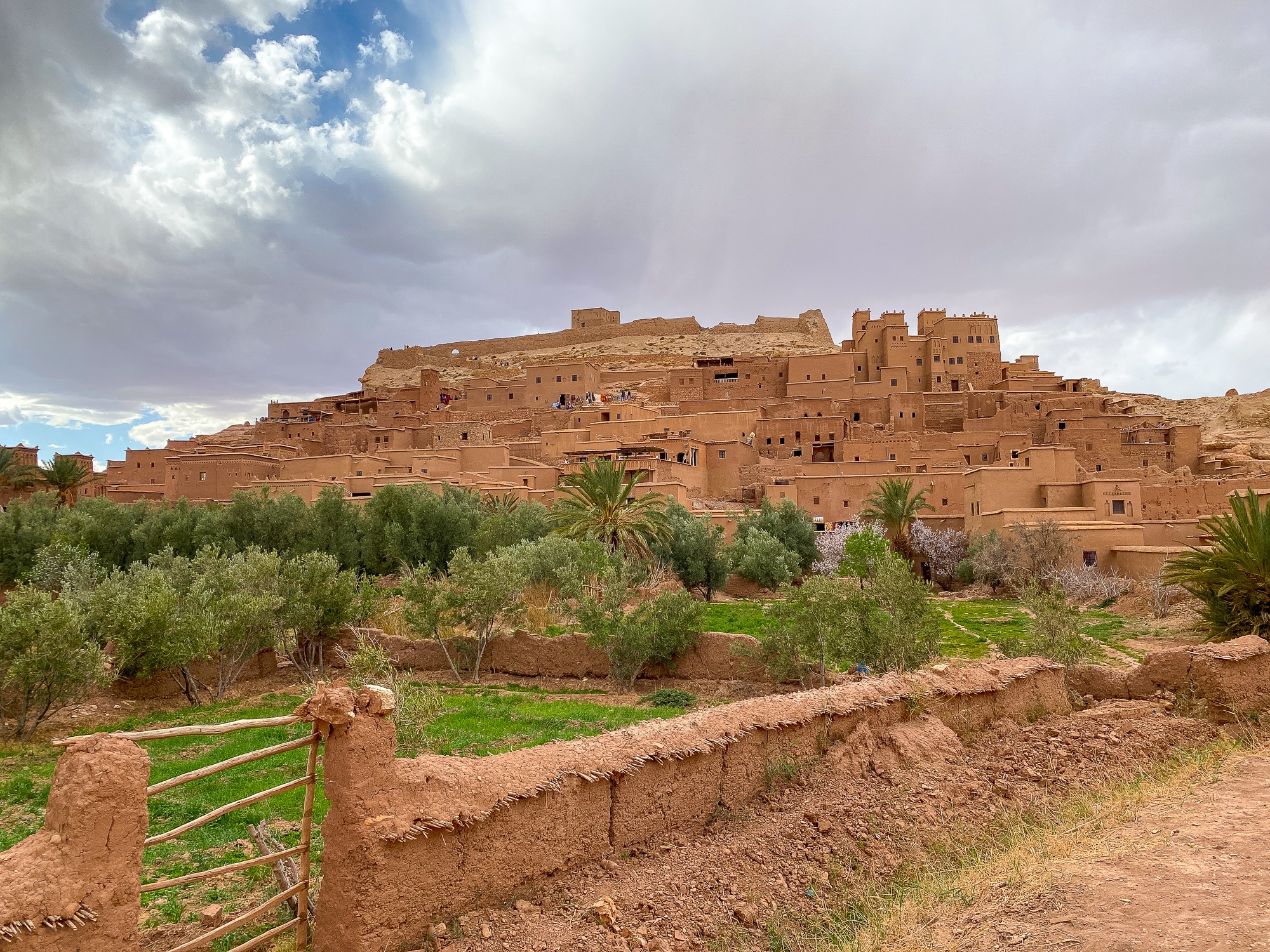
20. Watch artisans making Berber rugs.
Surely, you’ve heard of Berber carpets and Berber rugs. Traditionally, these are handwoven by the Berber (Amazigh) people of Morocco and North Africa. These floor coverings are renowned for their beauty as well as their durability.
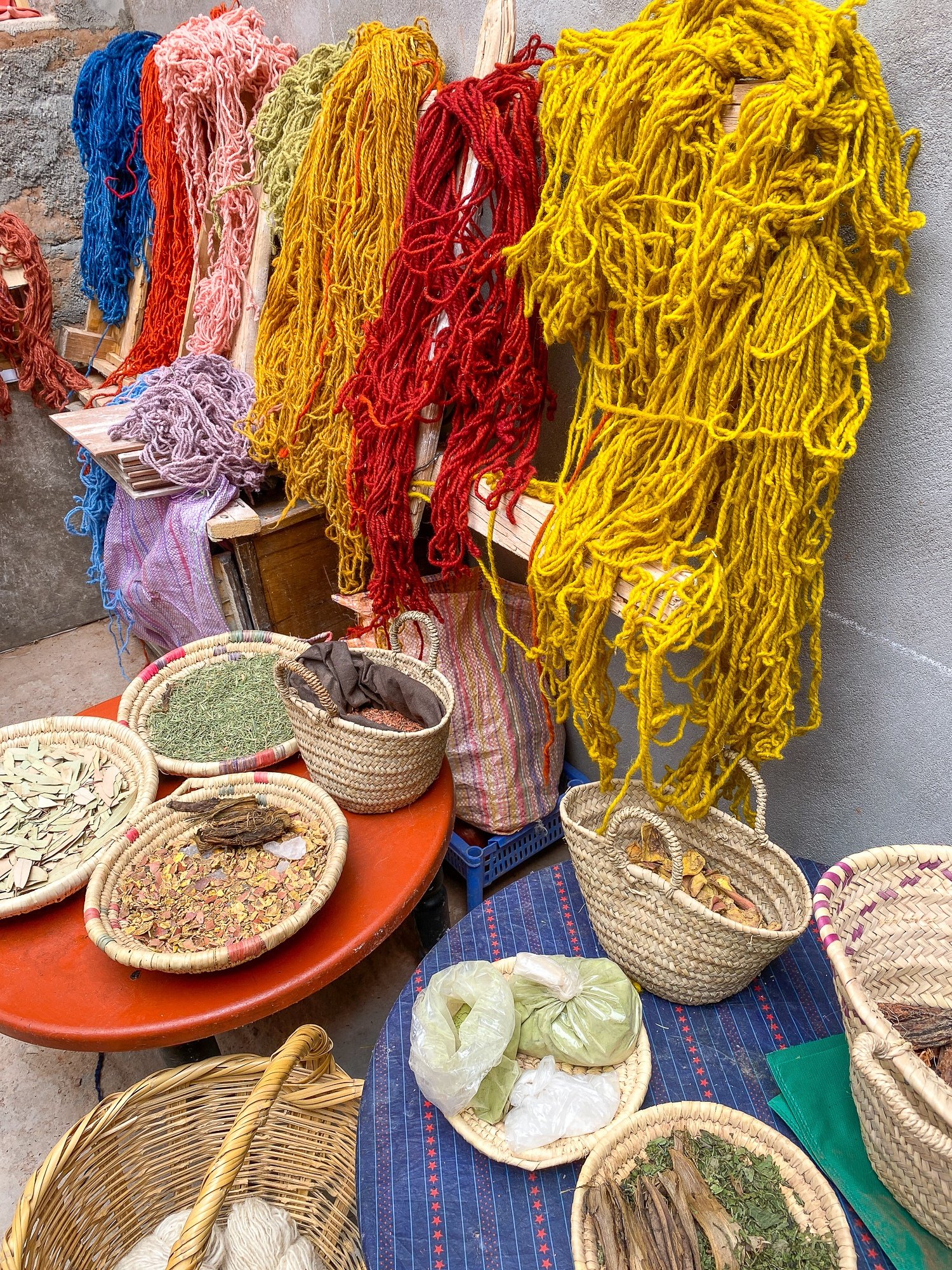
We visited the Akhnfi Laglaoui women’s Berber rug cooperative in Aït Ben Haddou. There, we learned how the wool is made and dyed. Meanwhile, the kids in our crew embarked on a treasure hunt with our guides while the parents shopped.
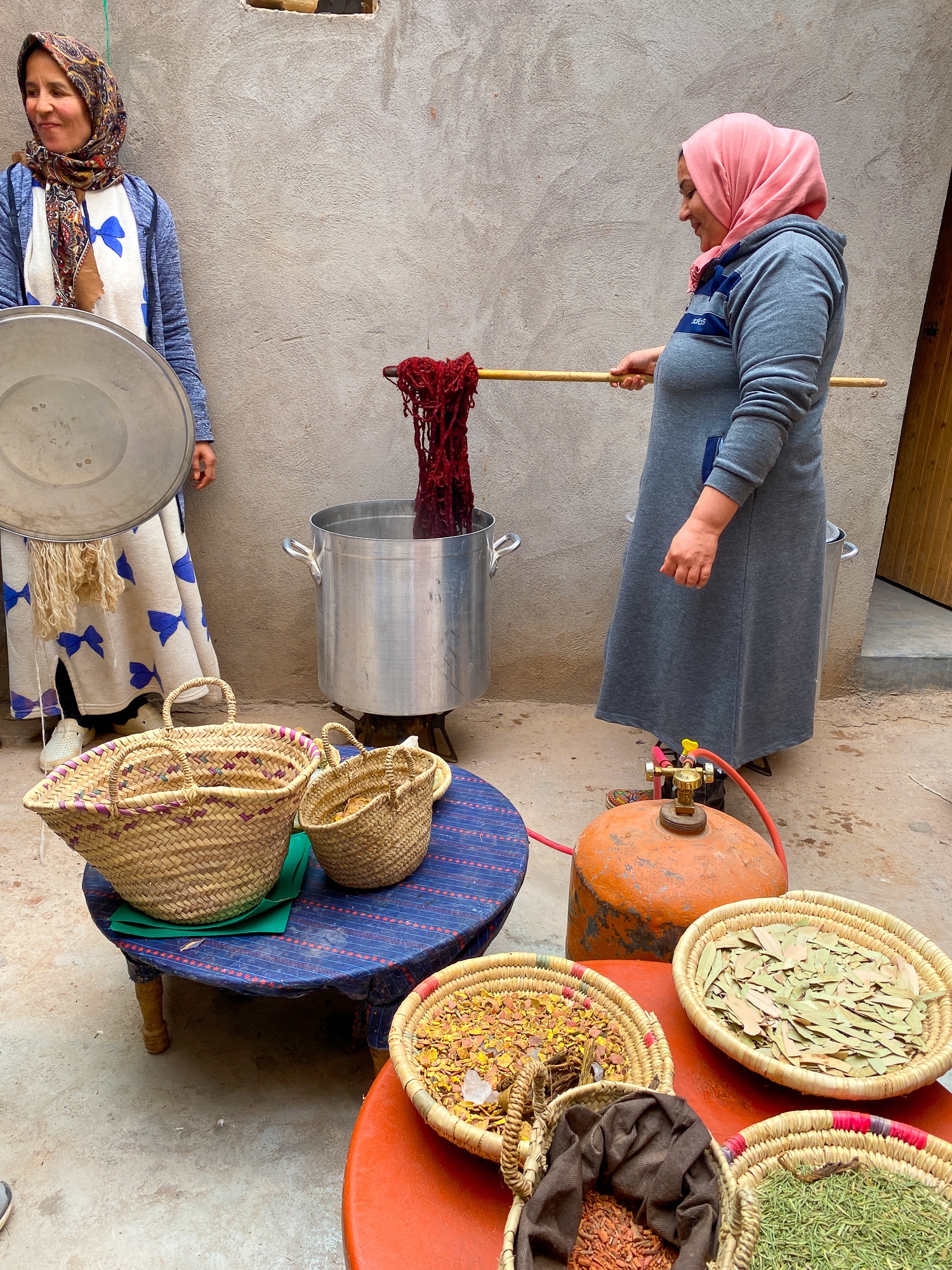
The yarn is hand-woven and dyed in a variety of colors using things found in nature like henna, pomegranate skin, oak bark, eucalyptus leaves, rosemary, tree roots, and indigo stone. The women at the Aknif Glaoui co-op in Aït Ben Haddou add the wool yarn to heated pots of water and use vinegar and salt to make the color stay. The artisans then weave the yarn on looms into intricately patterned rugs and table runners.
I asked the artists if they had any placemats for sale. They didn’t, but they were happy to cut a runner into four placemats for me. I love the splash of color and wonderful memories of Morocco that these add to my home!
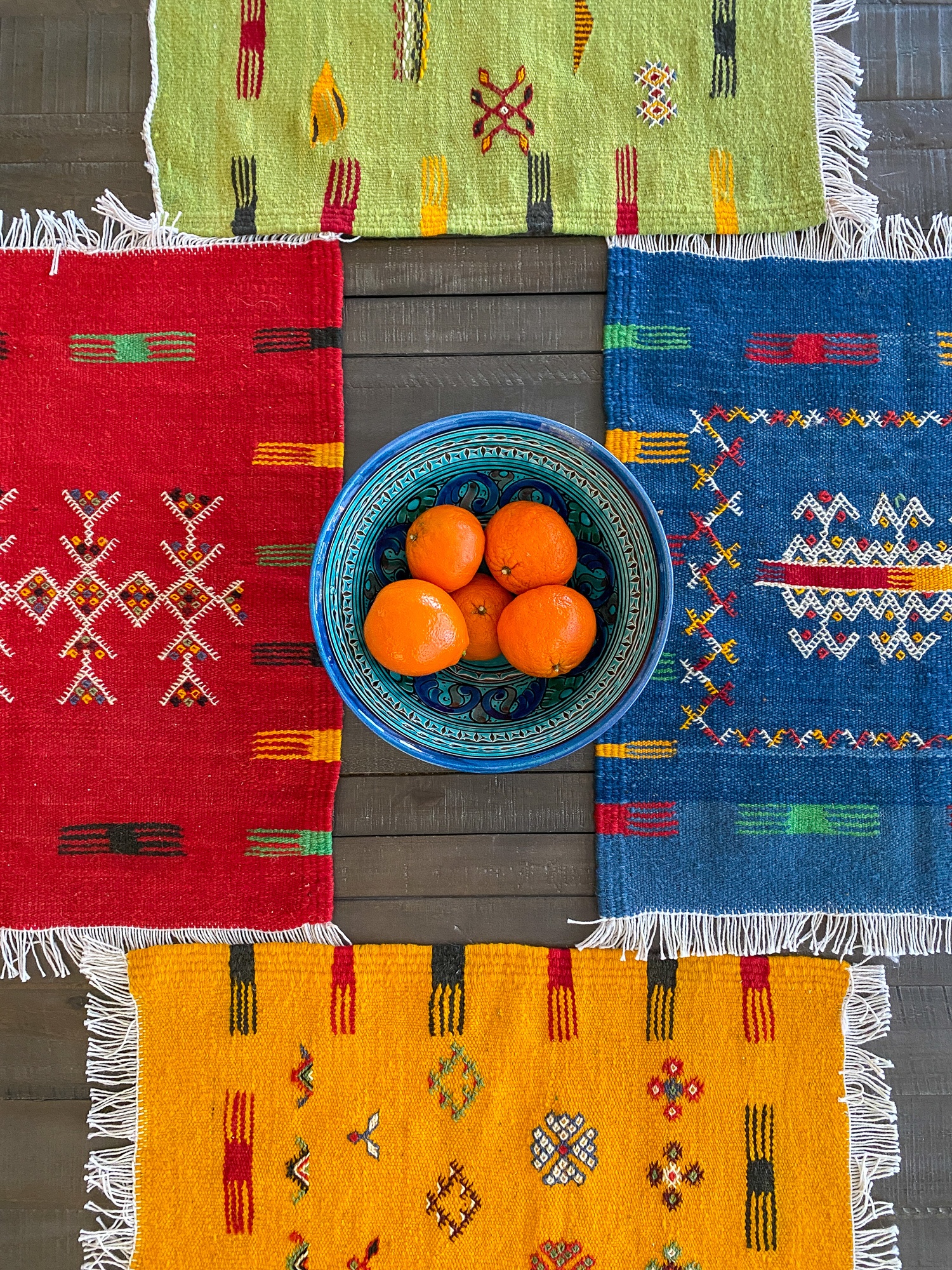
21. Attend a Moroccan cooking class.
Morocco’s famous dish, tagine, is named for the cone-shaped earthenware pot in which it is cooked. During our National Geographic and G Adventures tour, we were treated to a cooking class.
Parents prepared chicken and vegetable tagine. Meanwhile, the children made M’semen, a traditional North African flatbread. Afterward, we all sat down to dig into our delicious dishes together.
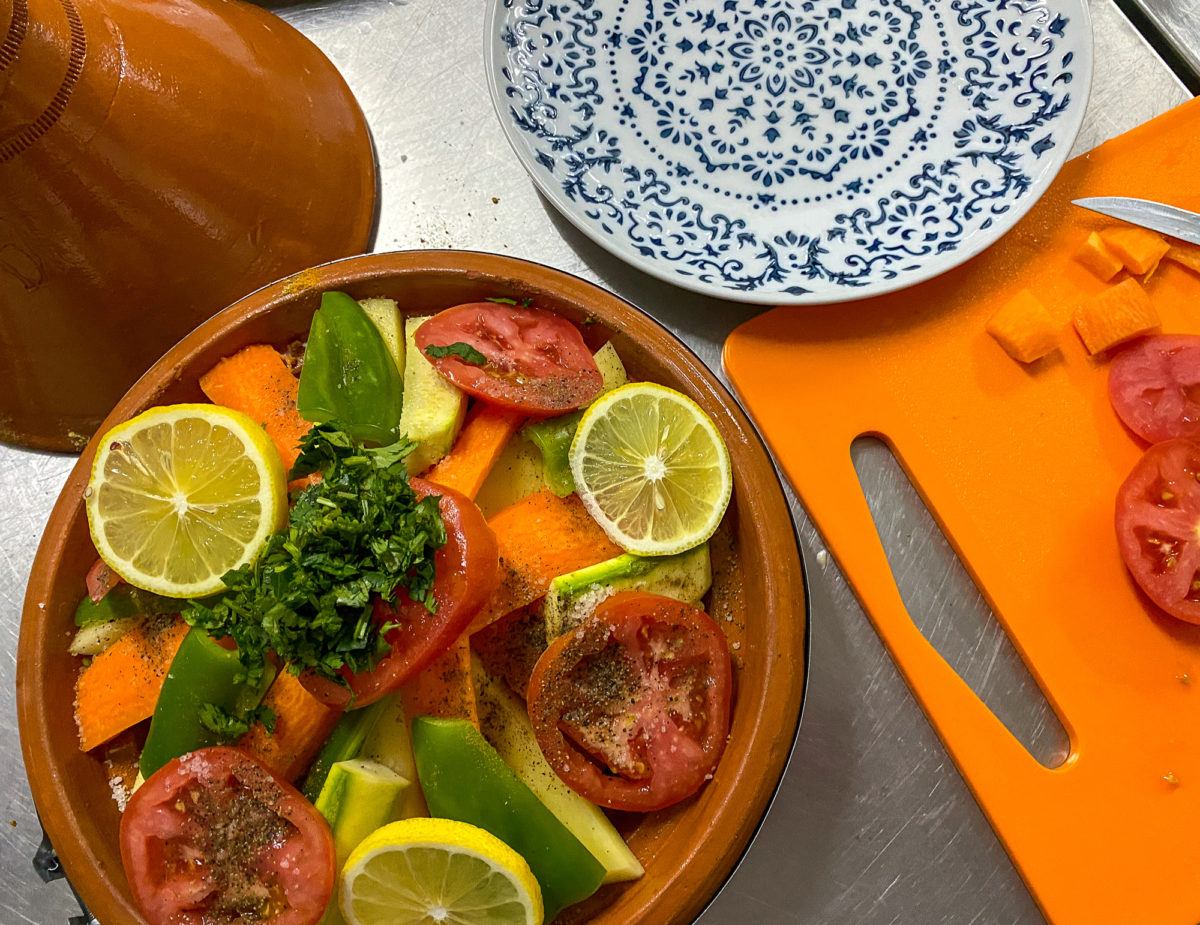
22. Enjoy Moroccan cuisine.
The food in Morocco is delicious, flavorful, healthy and always beautifully presented! What’s more, all the kids on our tour enjoyed Moroccan food, including my picky son.
Every meal in Morocco starts with a salad filled with lots of fresh, colorful vegetables. Dishes like tagine (a dish named for its earthen cooking vessel) and pastilla (a sweet and savory poultry pie) are flavorful but not spicy, making them enjoyable for kids. Most meals finish with a delicious array of fresh fruits, sometimes served with yogurt.
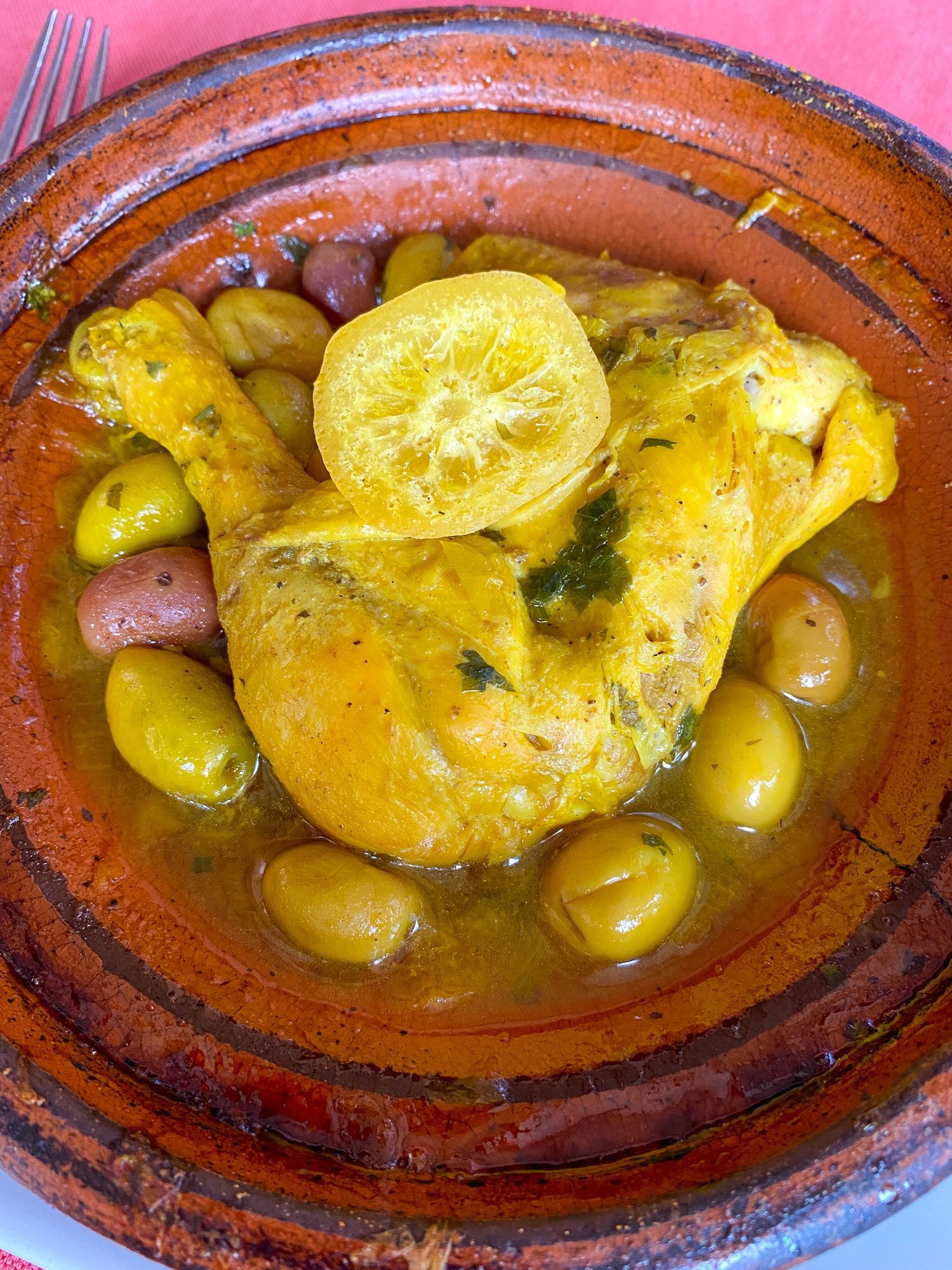
23. Bring the flavors of Morocco home with you.
If you enjoy the food in this foreign country as much as Leo and I did, then you’ll want to bring the flavors of Morocco home with you. Look for spices like turmeric, cumin, saffron, cinnamon, and especially spice blends to recreate Moroccan dishes.
We stopped at La Caravane des Épices in Ouarzazate, where we learned from an herbalist about the healing properties and flavor profiles of various herbs. We even got a chance to taste some of their products. For example, my son loved their delicious almond butter mixed with healthy argon oil, which he insisted we buy as a tasty souvenir.
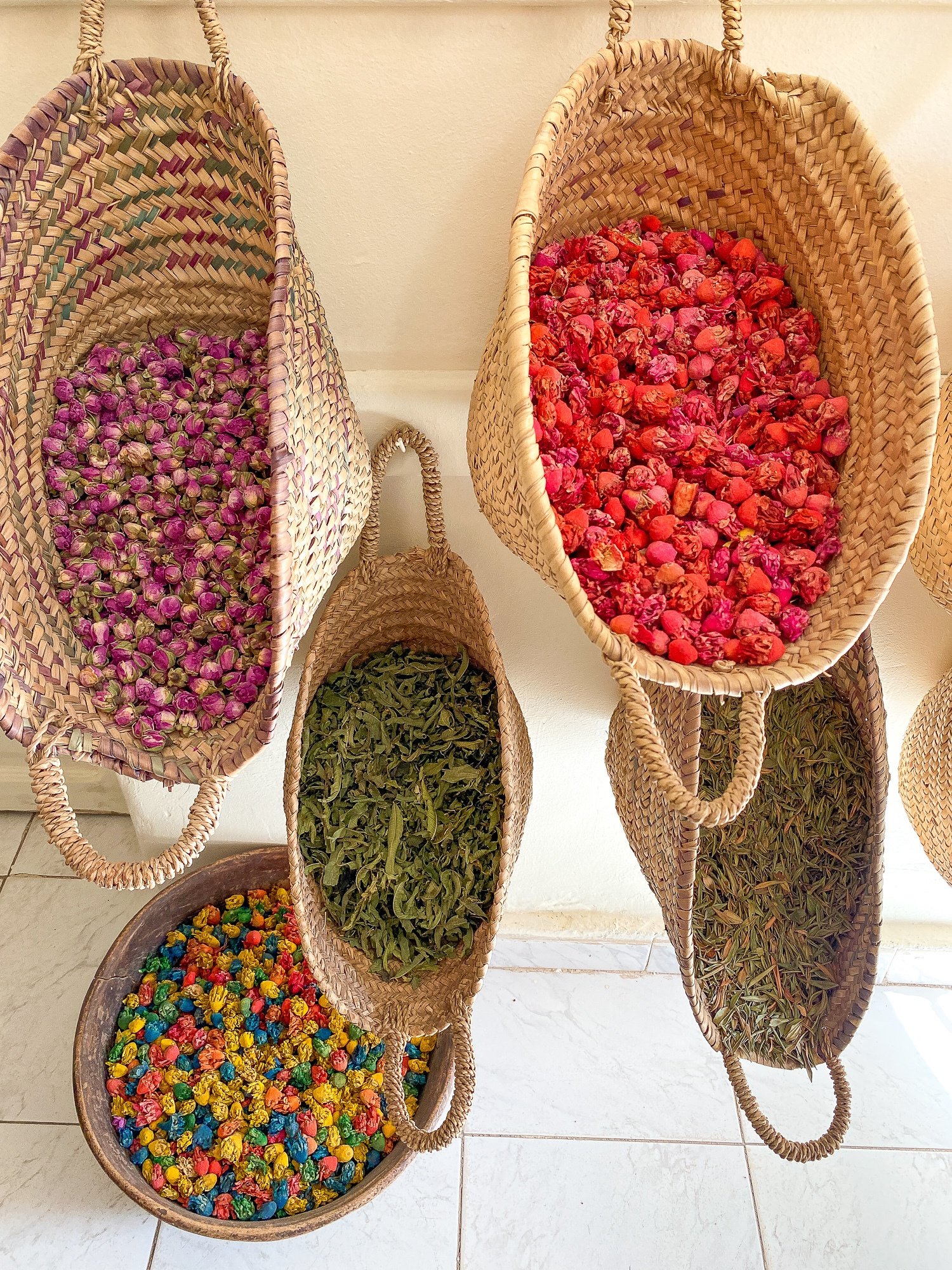
24. Spend the night at a riad.
Have you ever heard of a riad? It’s a traditional Moroccan home with an interior courtyard. Riads are often modest on the outside but quite luxurious on the inside. This is to avoid the evil eye as well as the jealousy of neighbors.
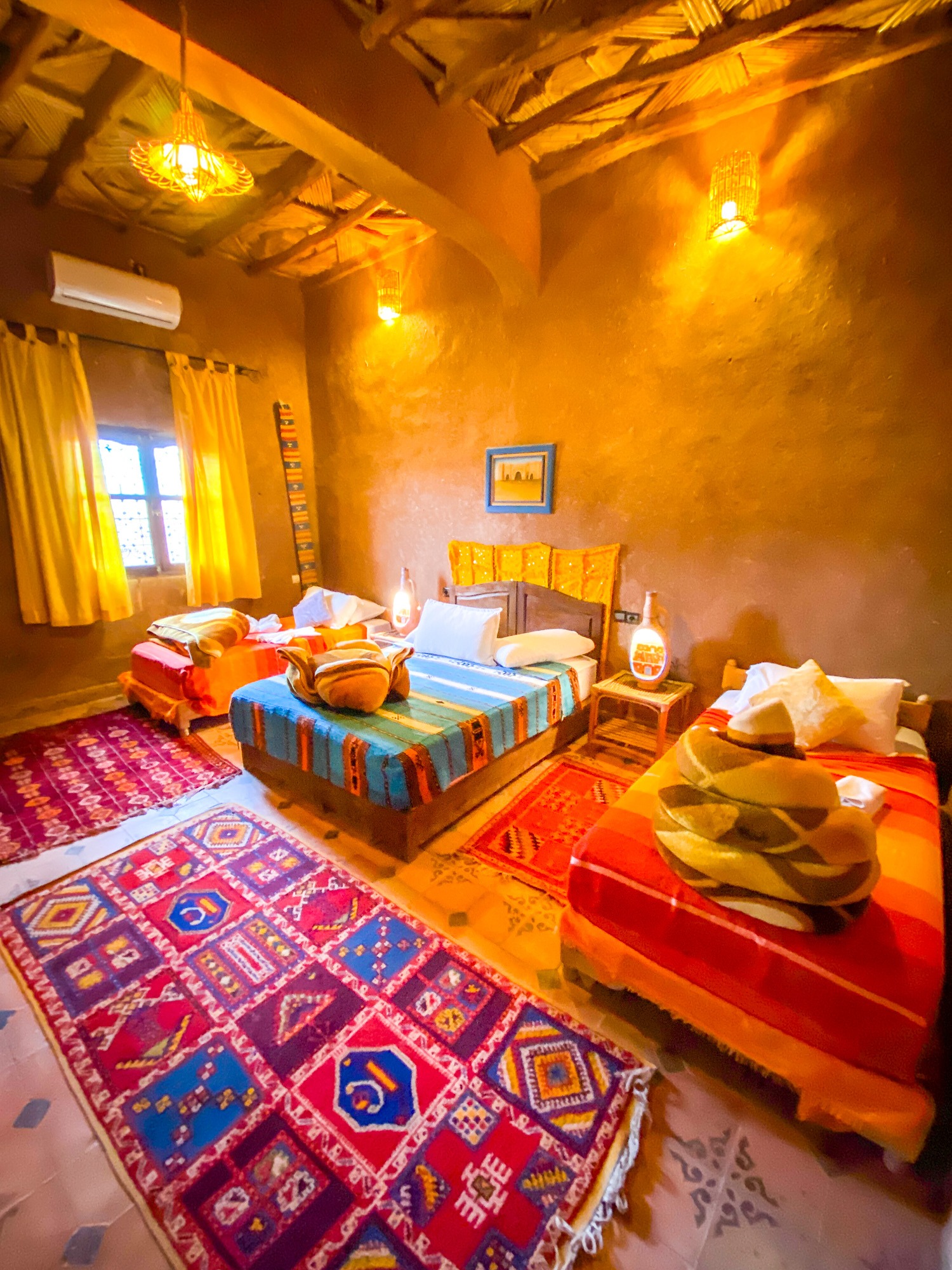
We enjoyed the family-friendly accommodations at Riad Maktoub. This beautiful riad in Aït Ben Haddou has a lovely courtyard swimming pool. I love that the rooms are all unique. Ours had three beds for families or friends traveling together.
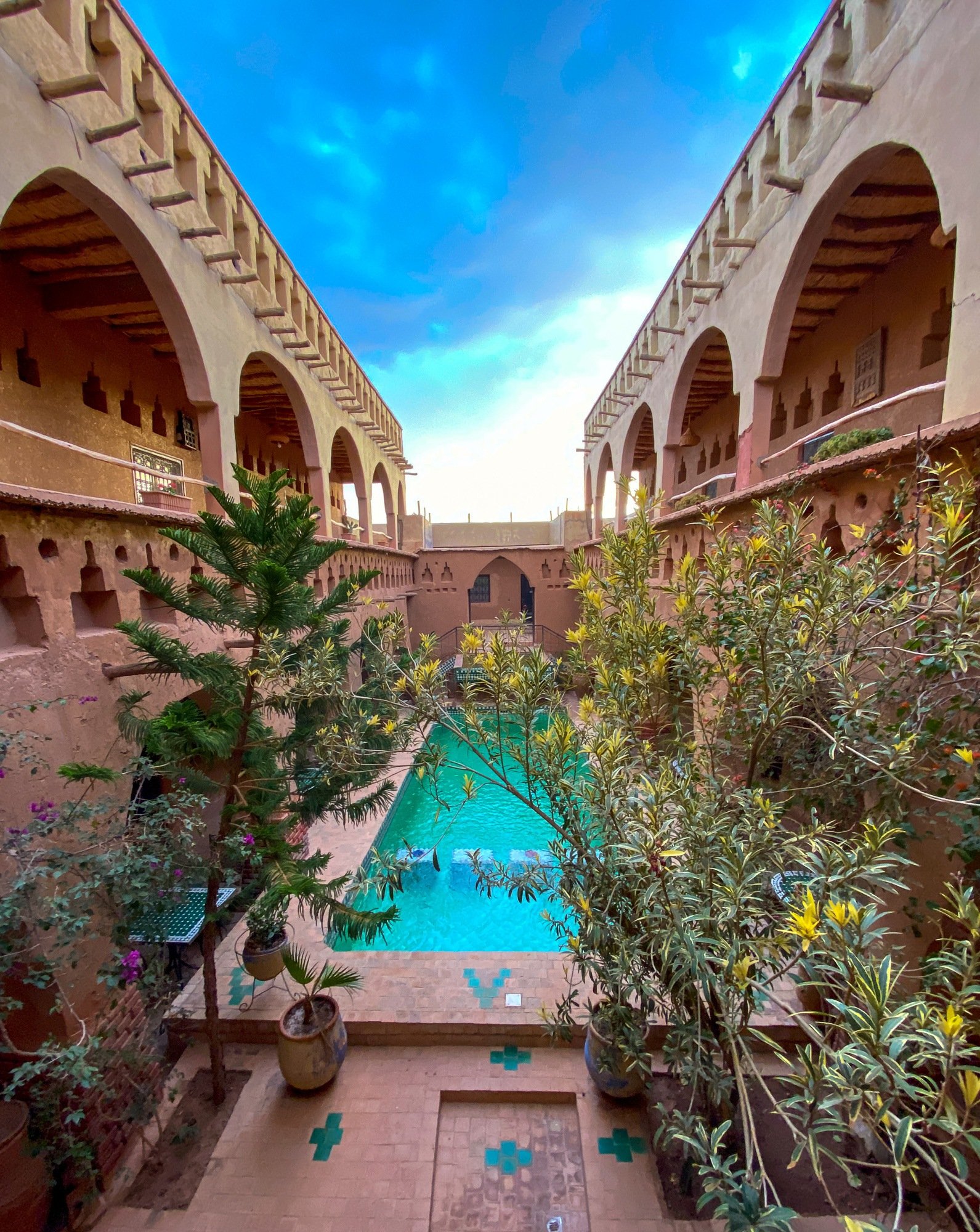
25. Explore Morocco with National Geographic and G Adventures.
To get the most out of your Moroccan family adventure, I highly recommend signing up for a tour like our National Geographic and G Adventures Family Journey: Ancient Souks to the Sahara.
This is the best way to go, especially if you want to travel into the Sahara Desert in Morocco with kids. Having someone navigate the roads, translate, and bring their home country alive for us was priceless. Young children (aged 7+) as well as teens were part of our group and all ages had a great time.
Ready to explore this fascinating country? Book this guided Moroccan family holiday with National Geographic Family Journeys and G Adventures now! You can also take a look at their other Morocco trips.
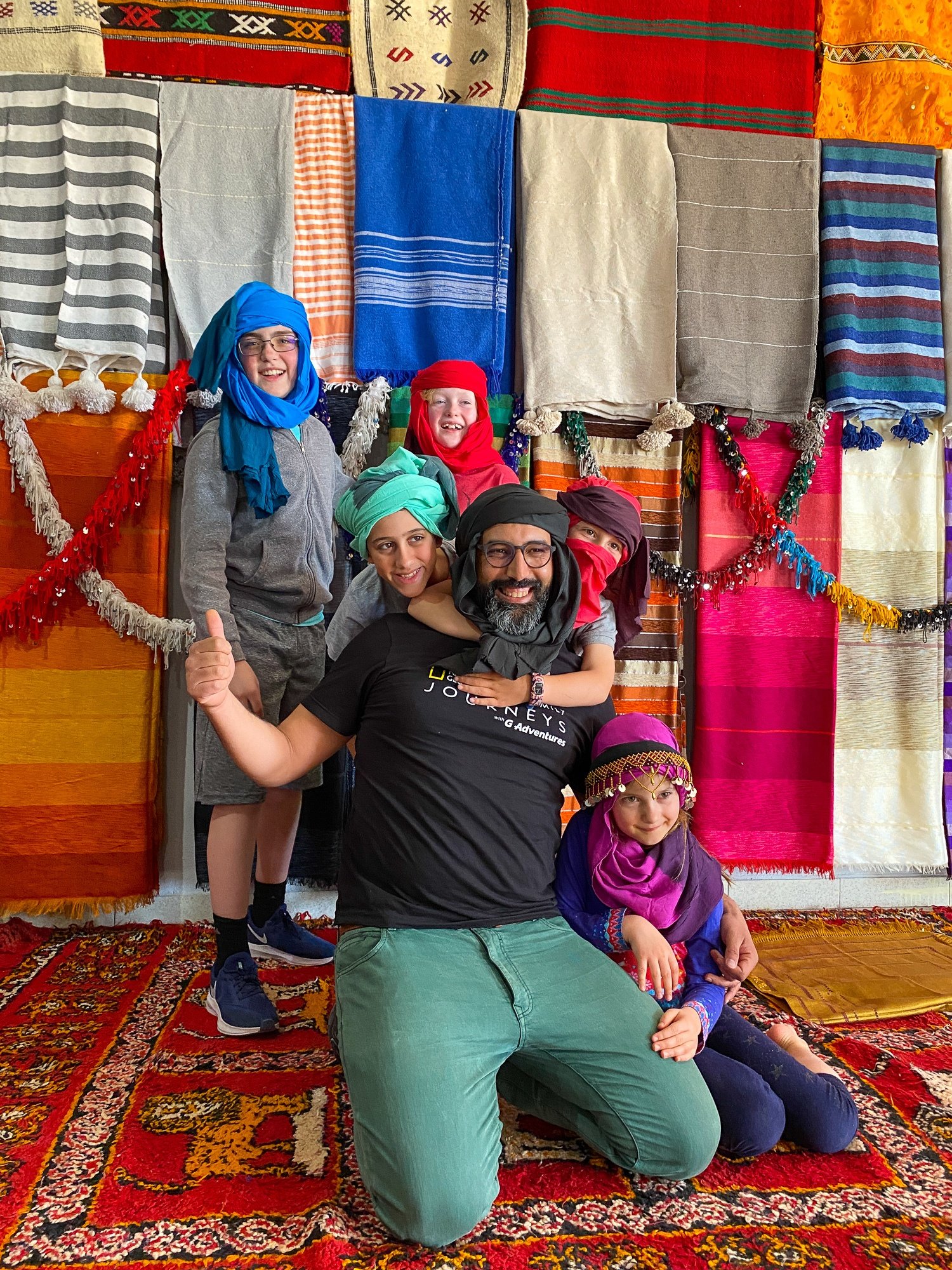
Explore more of the Middle East and Africa.
Morocco is considered part of both the Middle East and Africa. The articles below will help you discover more about these fascinating regions.
Check out intriguing things to do in Israel.
Read these tips for visiting Jordan.
Take a look at the most beautiful cities in Africa.
Discover the best foods in Morocco for kids.
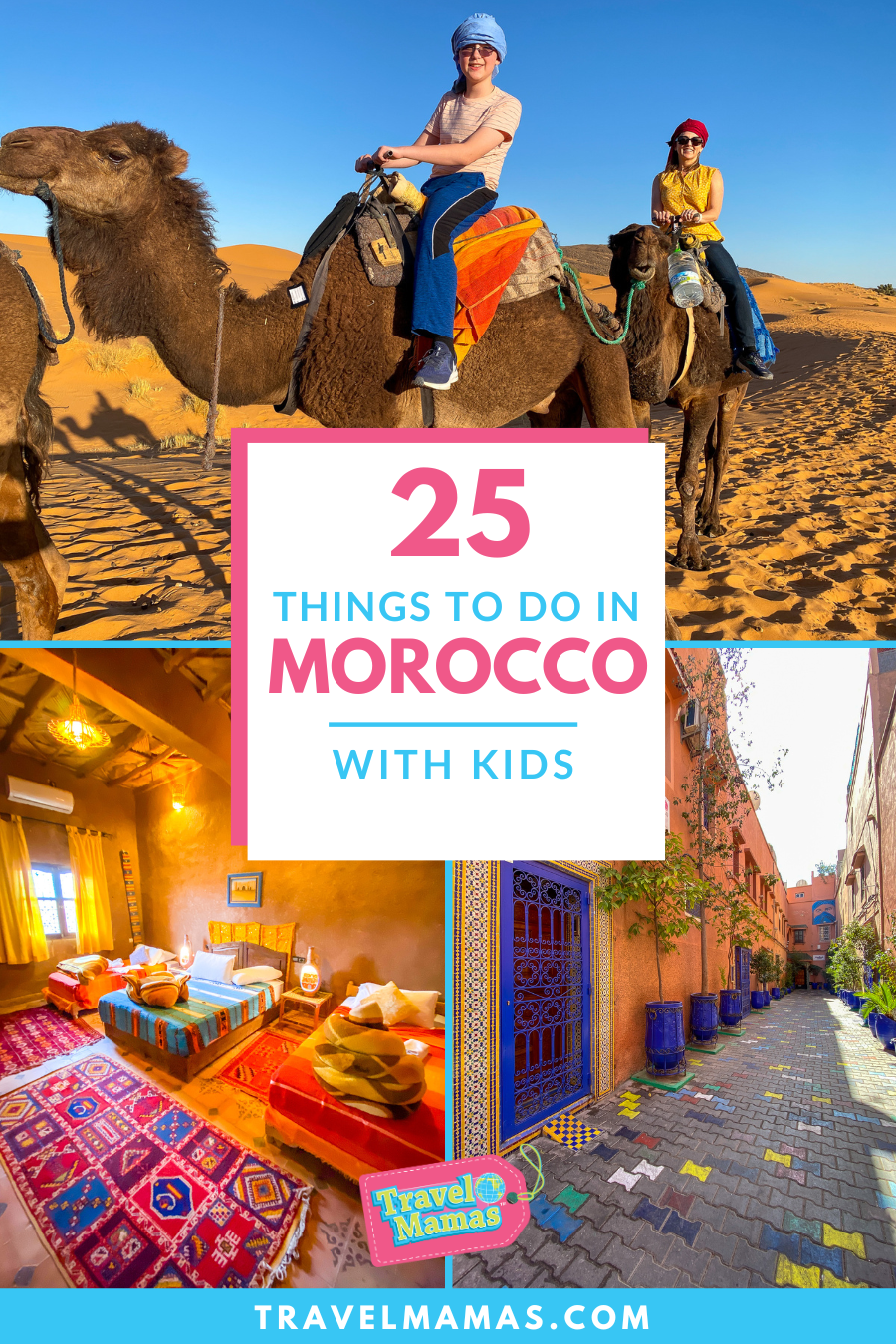
Save these tips for visiting Morocco with kids!
Is a Moroccan family vacation on your bucket list? Be sure to save this list of things to do in Morocco with kids. Simply pin the image above to Pinterest. We hope you’ll follow Travel Mamas on Pinterest while you’re at it!
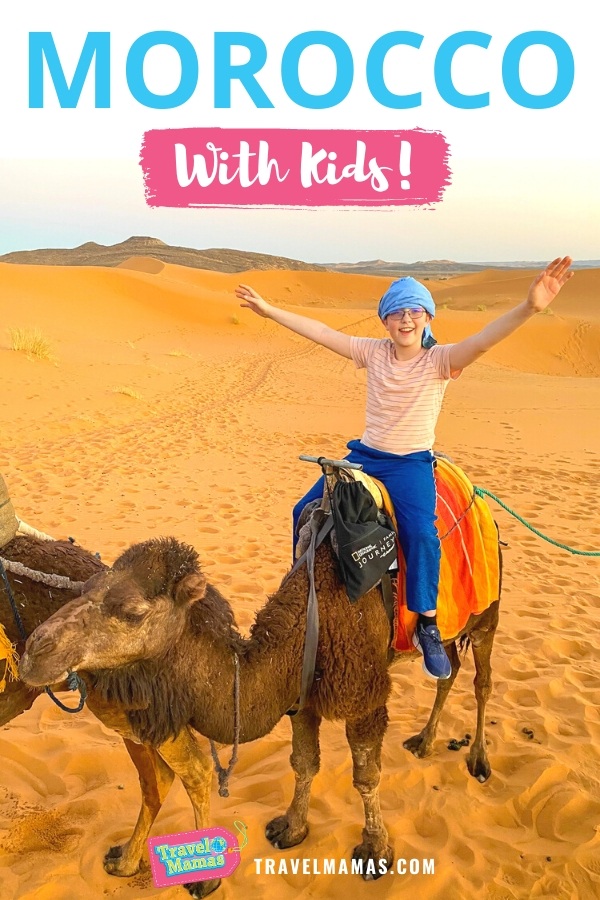
Would you like to visit Morocco with kids? Let us know in the comments below!
A Note from The Travel Mama: National Geographic and G Adventures hosted my son and me for the purpose of this story. I did not receive any monetary compensation related to this blog post. All opinions are mine, as always.

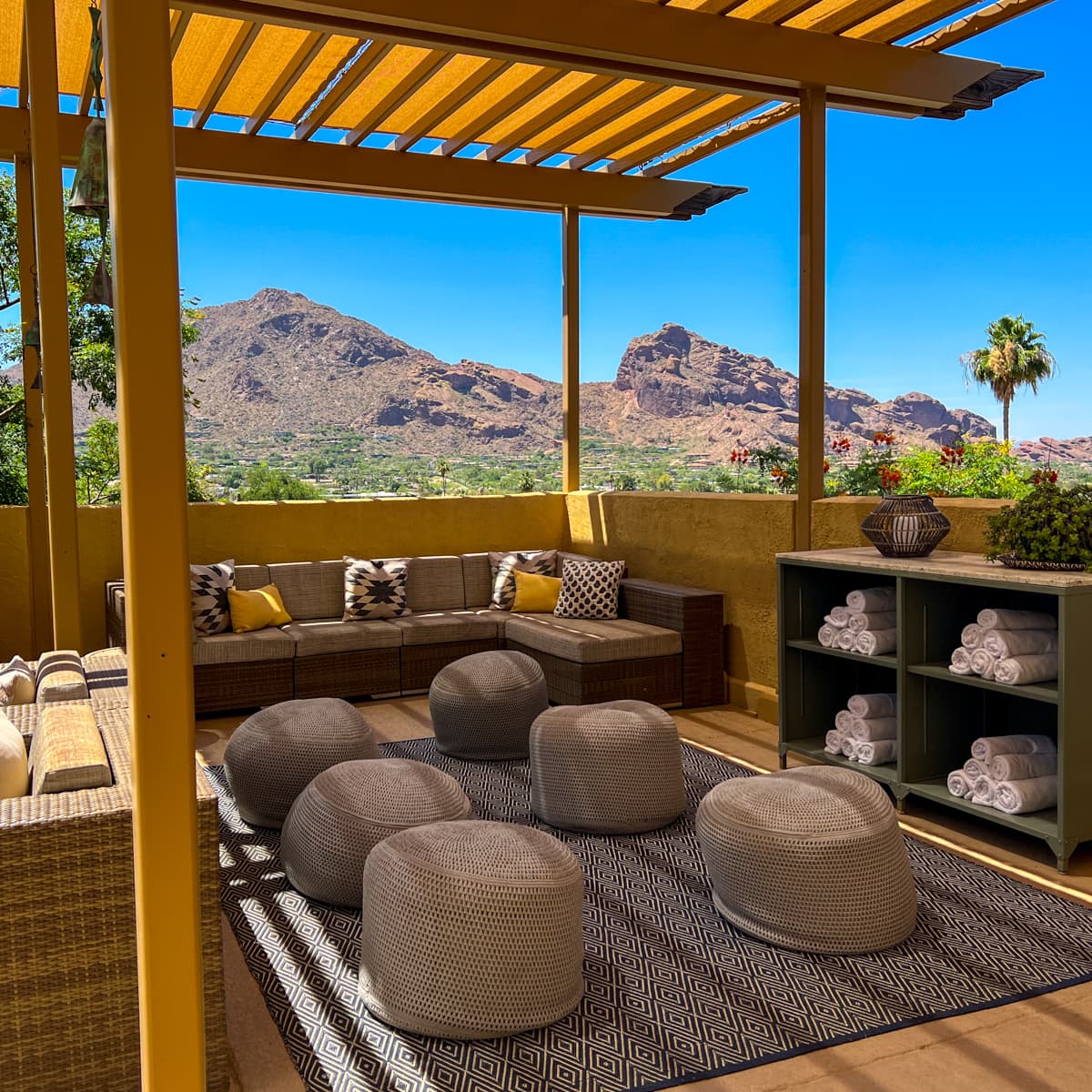
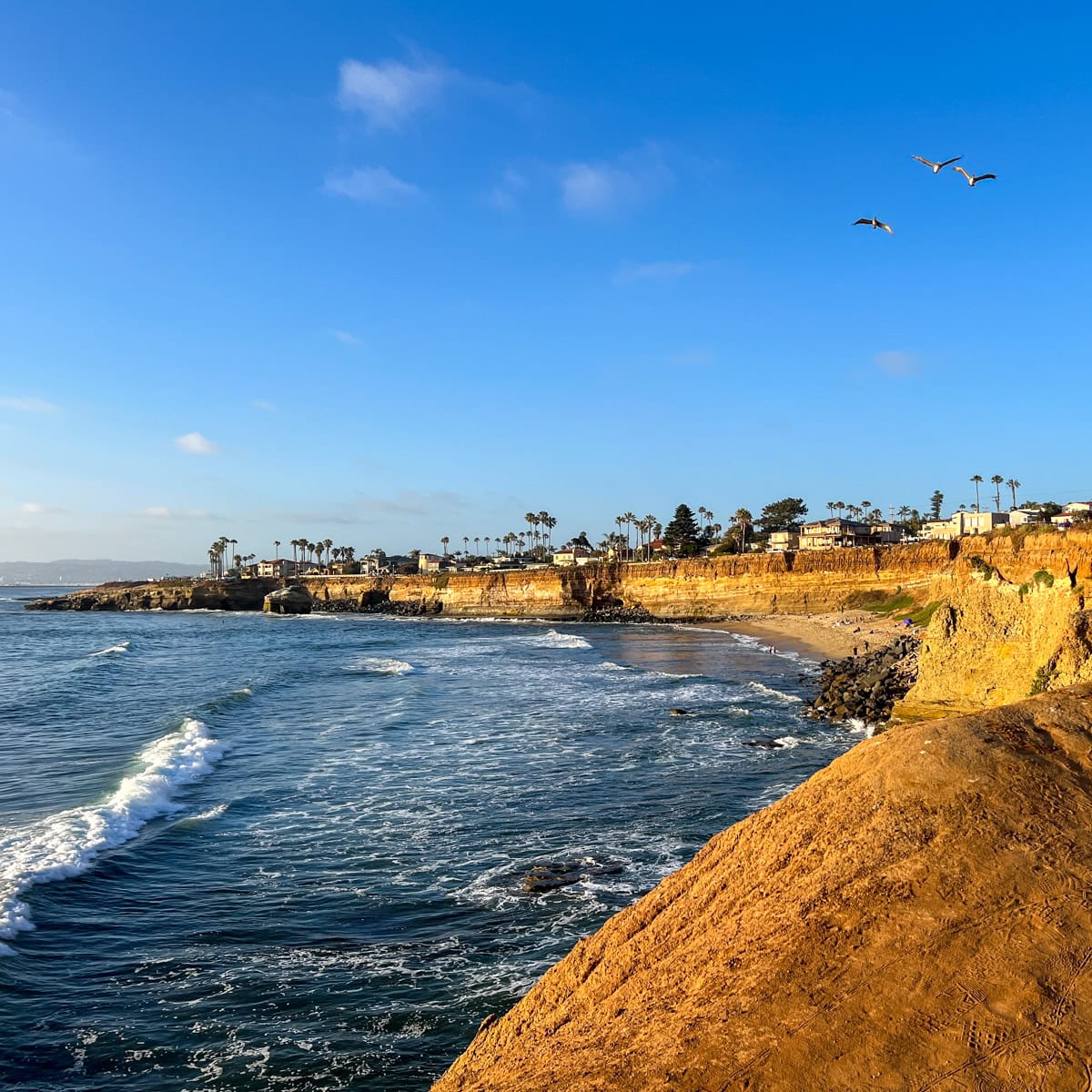
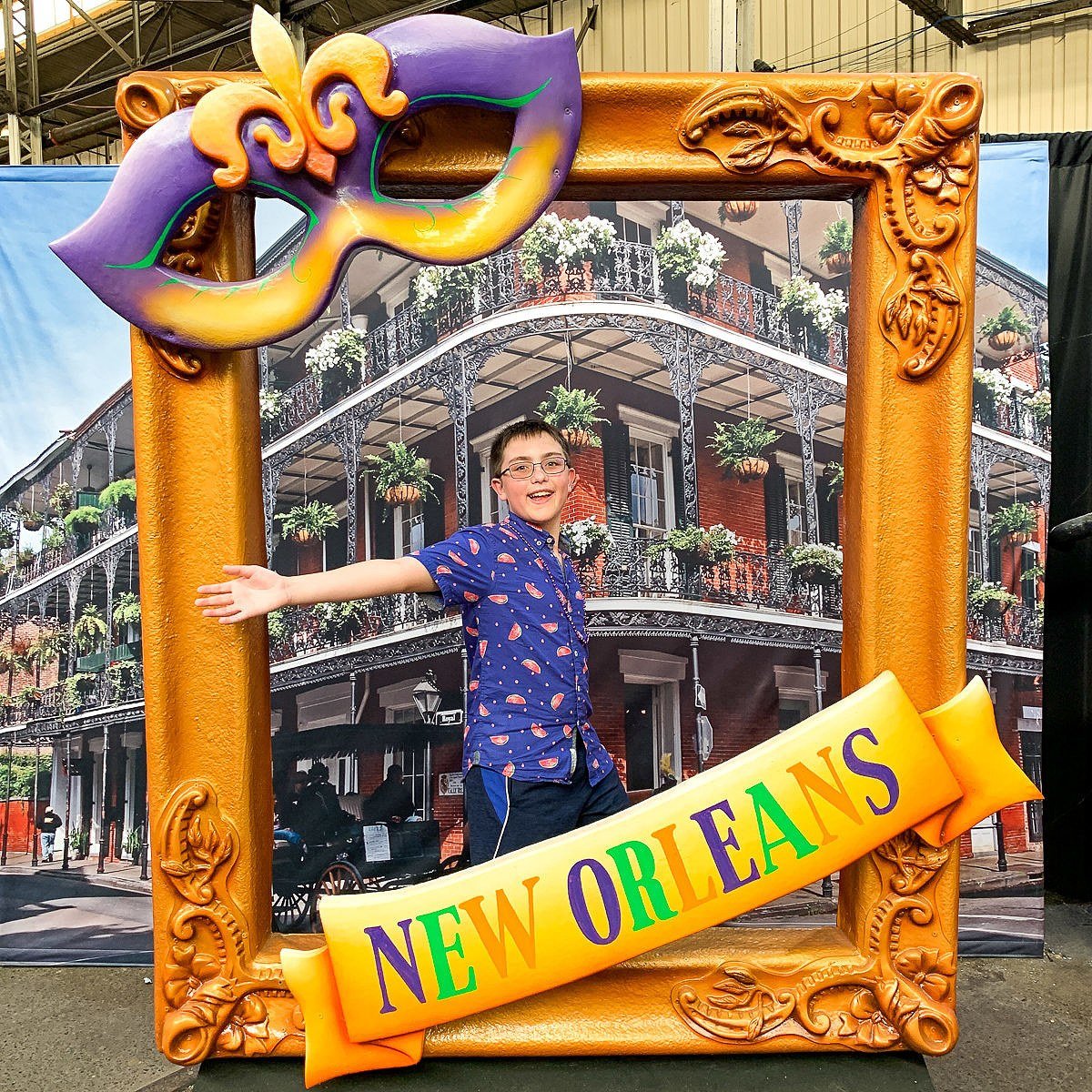
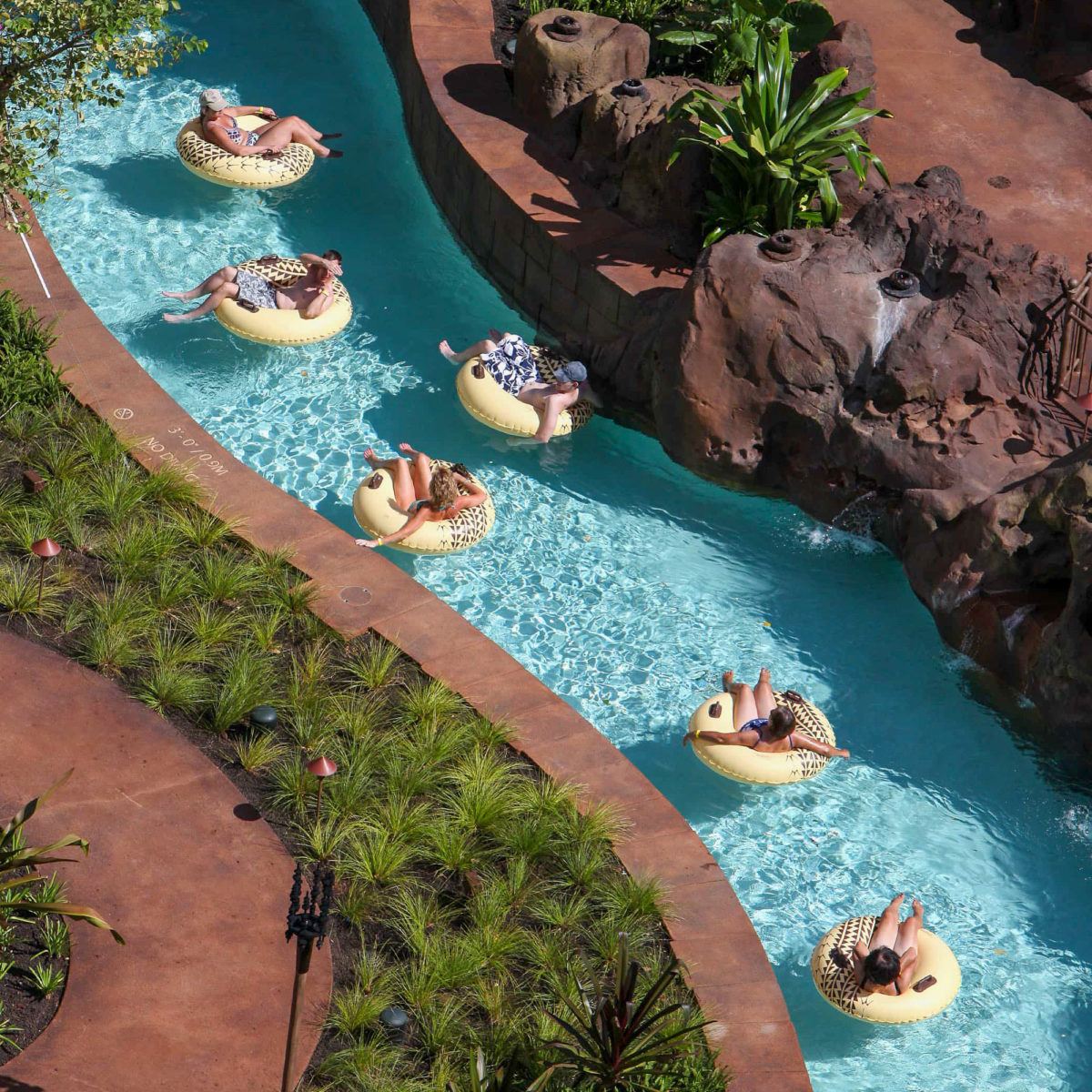
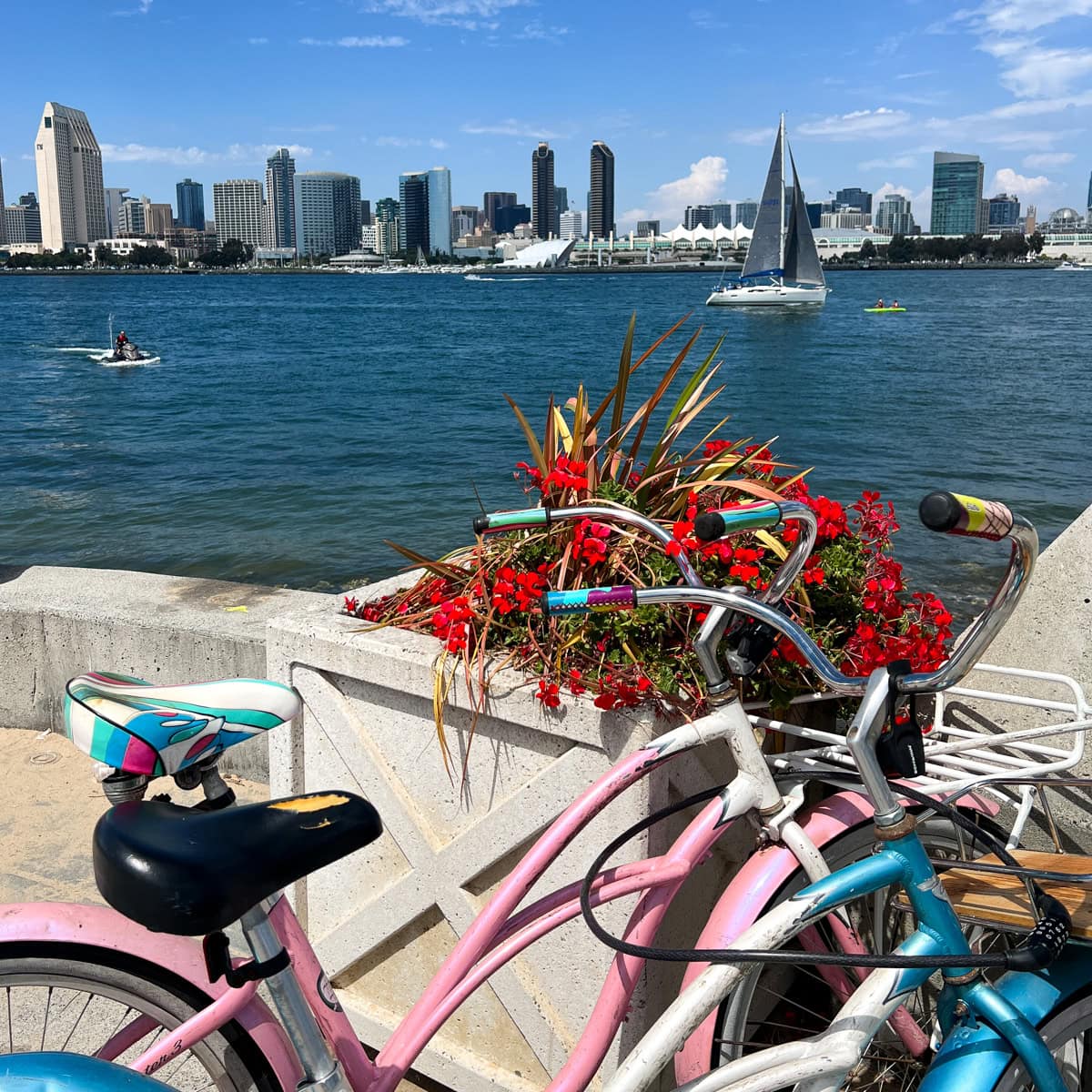
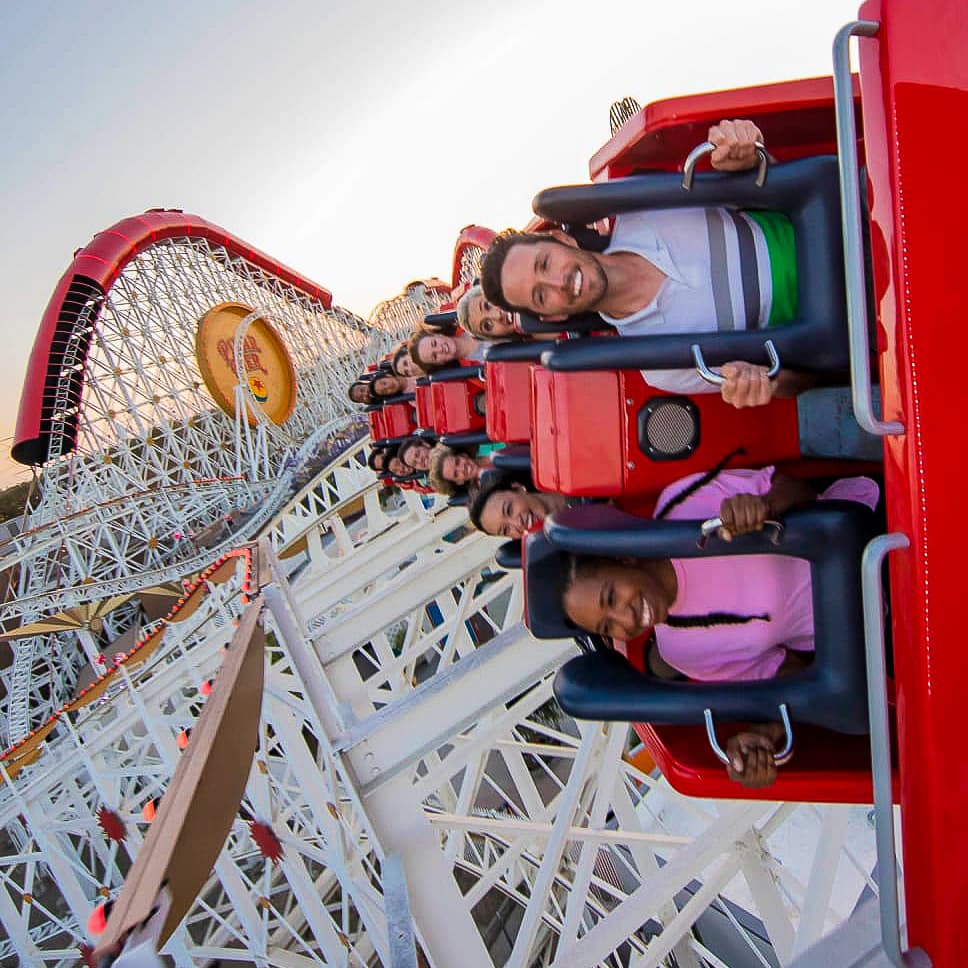
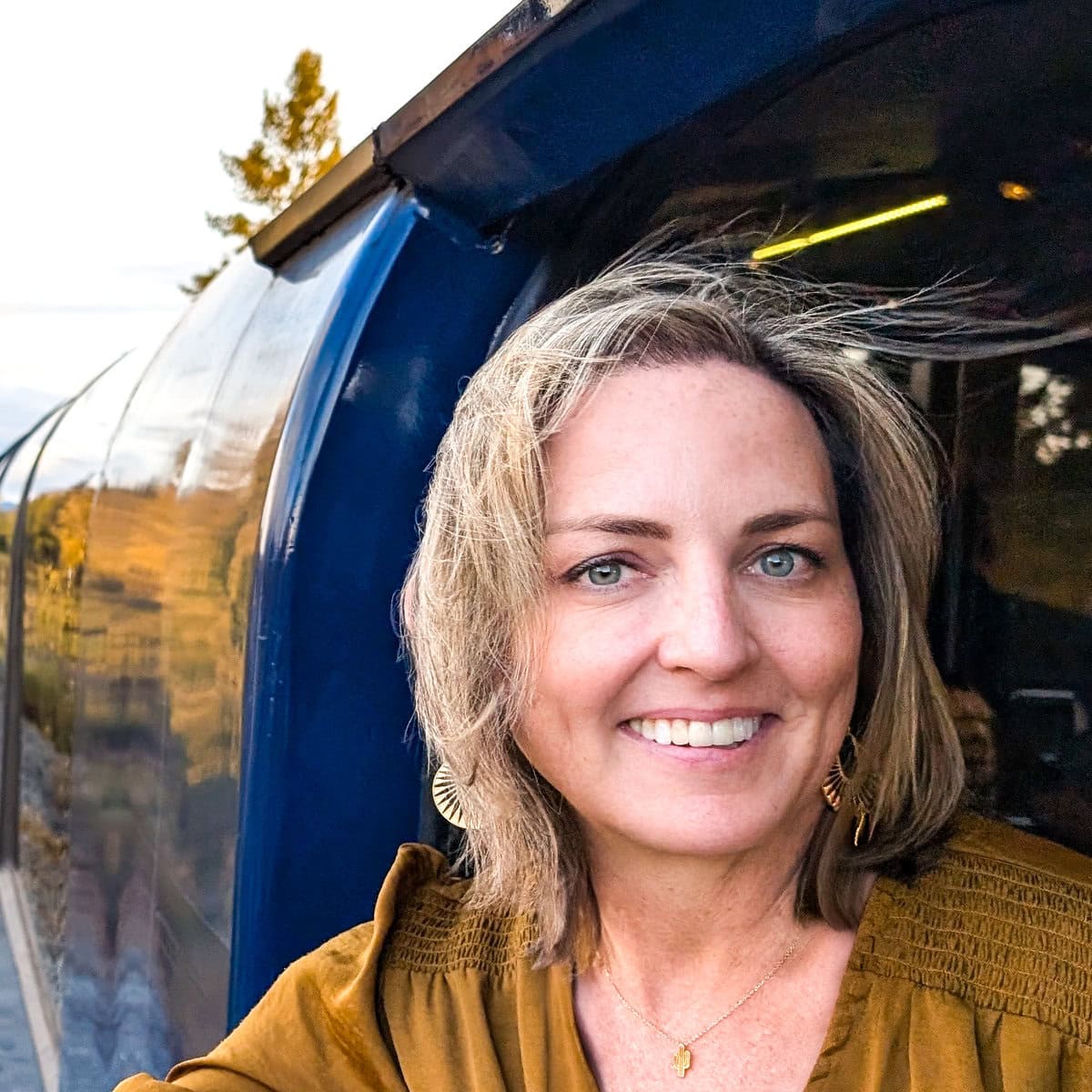
We will be going to Morocco this summer. I found this article very helpful for making our plans. I want to buy their spices!
Ellen – You absolutely should bring some Moroccan spices home with you! Cooking foreign dishes is such a wonderful way to remember a destination!
Thank you so much for sharing this article, we are happy to hear that you had a family experience in Morocco. Wish you all the best, and welcome to Morocco.
Thank you, Mohamed! I hope to explore more of Morocco someday!
Oh my gosh, what an epic post! I’ve always wanted to go to Morocco. I just love the food, and would love to try their famous mint tea! Being a Muslim, I always enjoy visiting Muslim countries and seeing how Islam is interpreted in different cultures. And of course, I would want to watch, and maybe even try, some of the belly dancing. Such a fun post!
Thank you for your kind words, Astrid! So glad you liked my Morocco tips. I hope you are able to visit Morocco someday when it is safe to travel again! ❤️
I really want to go to Morocco – and do EVERYTHING on this list! Right before the pandemic, I was at a TA training and got to learn more about G Adventures and Nat Geo’s offerings. I would love to do one of their trips!
This collaboration is a very interesting one. The combo tours are G Adventure’s highest end offerings and Nat Geo’s lowest end offerings.
Morocco is so high on my list of places to go! This is a great list of things to do with the kids.
Deborah – I hope you can visit Morocco someday and that you love this country as much as my son and I did!
Being from a small town in Minnesota, this is literally a DREAM vacation! Your photos highlight the many amazing things to do here. Thanks for the inspiration!!
I hope your Morocco travel dreams come true someday!
Morocco has always ben on my bucket list, but I wasn’t sure what it would be like for kids. It looks fantastic though. I’d love all those fresh juices and salads.
It’s a really fabulous destination for families, but it’s a destination that’s probably best explored with a tour unless you’ll be staying in a big city like Marrakech the whole time.
Wow, I love the colors of Morocco, so bright and welcoming. It looks like you had an amazing international experience. Love all the pictures to inspire me to visit too. Thanks for sharing.
Morocco is a dream for photographers!
Morocco is on my bucket list for long LONG time. I hope to visit it one day. It’s such a beautiful place. Thank you for this virtual tour and guide. Lovely pictures and I really enjoyed reading this.
Natalie – Thanks so much for your kind words. Morocco truly is worthy of your bucket list designation. I hope you can visit this beautiful country someday!
I’ve never been to Morocco before. And looks such amazing. Thank you for sharing.
So glad you like my tips for exploring Morocco with kids!
I’ve never been to Morocco before. It looks like your kids had an amazing time! I love all of the pictures you shared!
Morocco is such a beautiful country to photograph!
Morocco is on my dream travel list. I have always wanted to go, but even more so after watching and AB FAB episode when Patsy and Edina traveled there. LOL
Ha! Can you believe I’ve never watched AB FAB?!
Oh wow, the country is on my bucket list and I can’t wait to go there! That’s wonderful that your family gets to enjoy the country together about food, culture and all! Thanks for the inspiring post – Knycx Journeying
I hope your Moroccan travel wishes come true someday and that your family loves Morocco as much as we did!
I have heard Morocco is really good, beautiful but it is way hot But still I would want to travel there.
The weather in Morocco was actually beautiful when we visited in February. In fact, it was pretty chilly in the Atlas Mountains! It really depends on when you go and where you travel within the country.